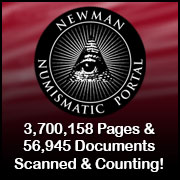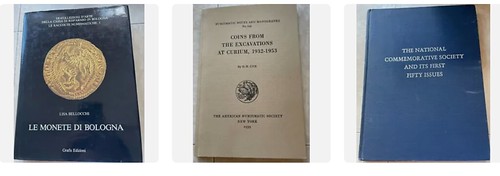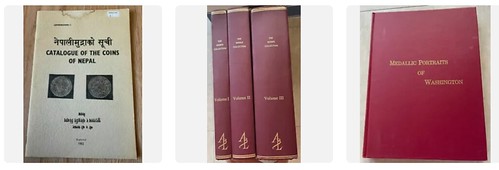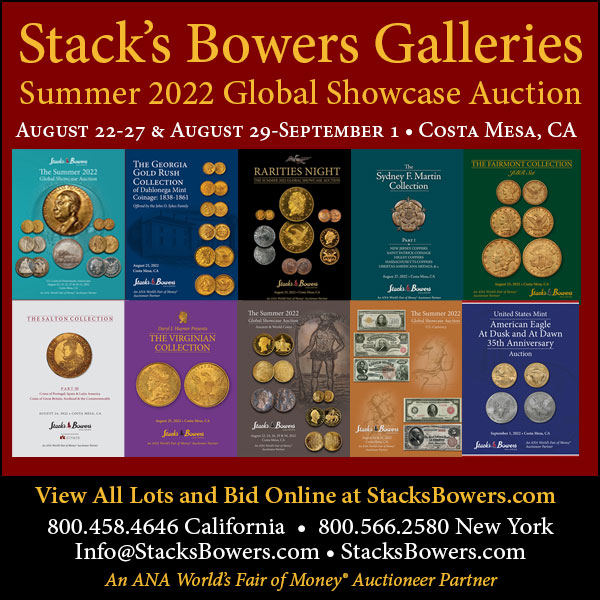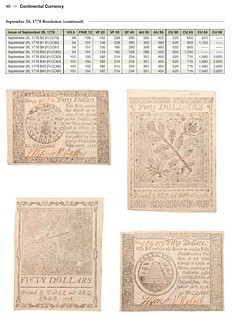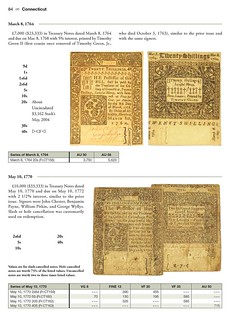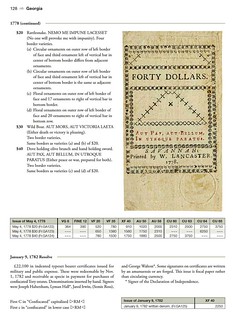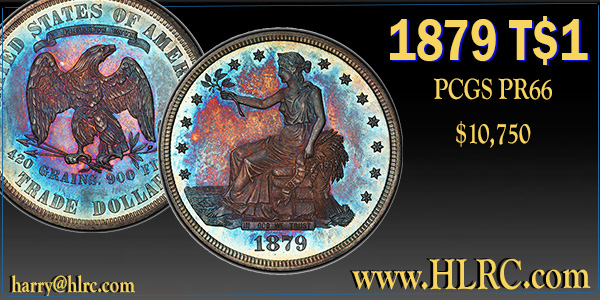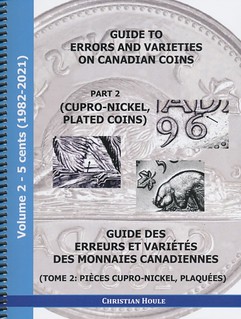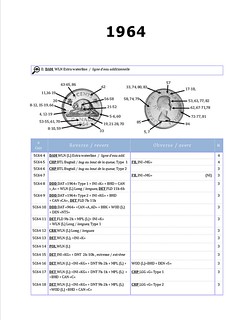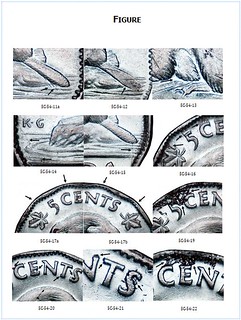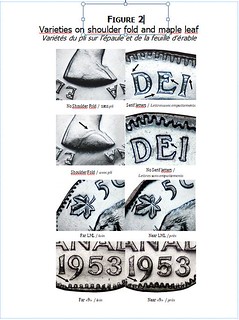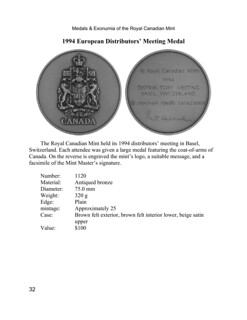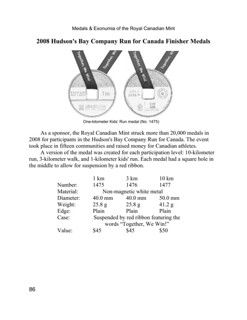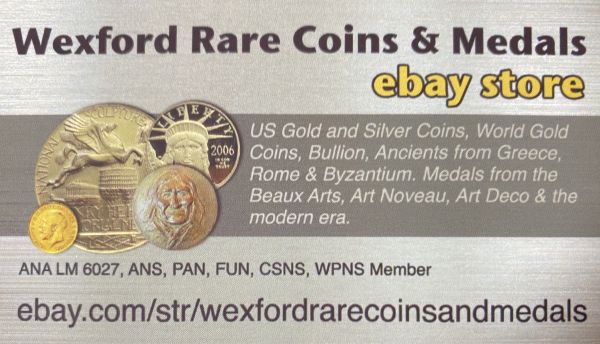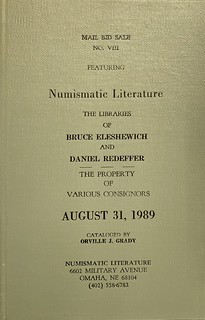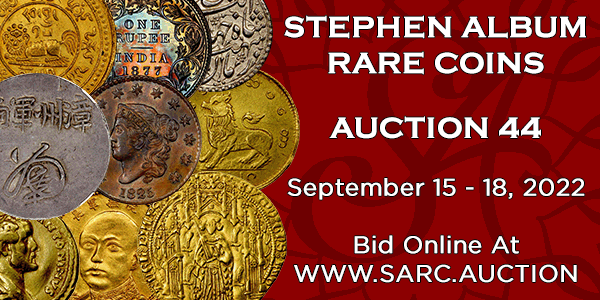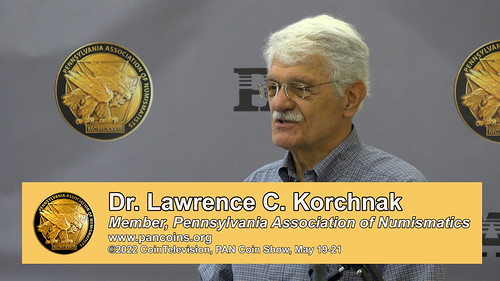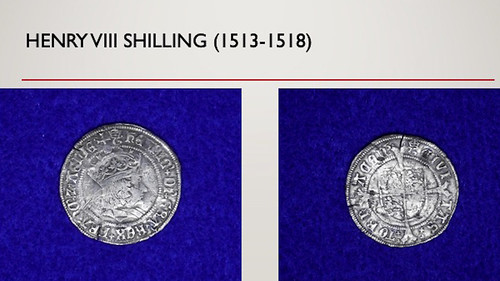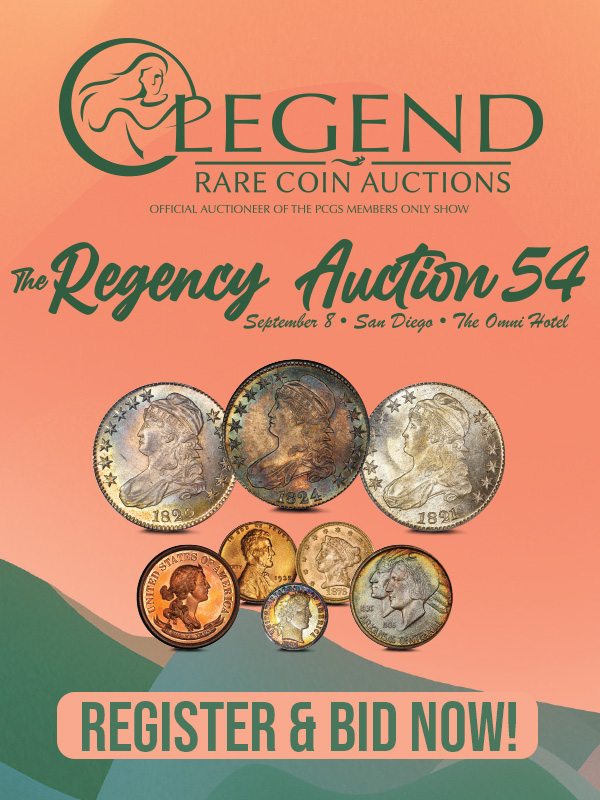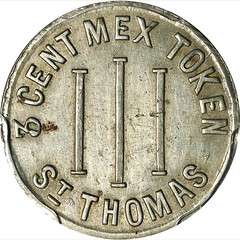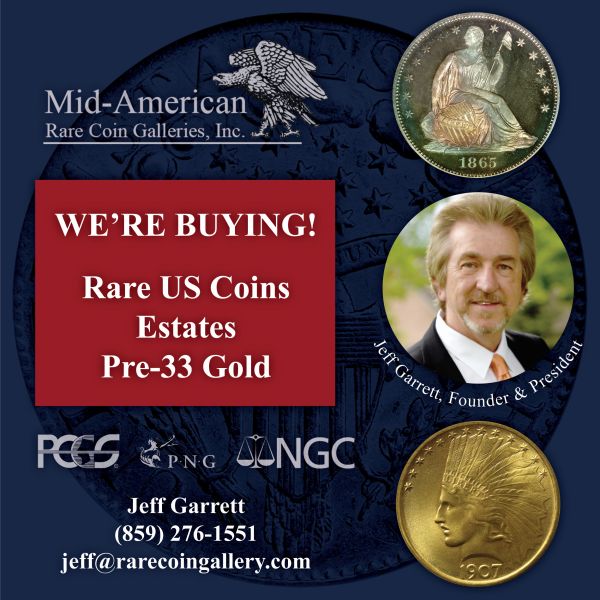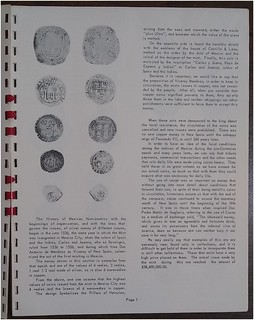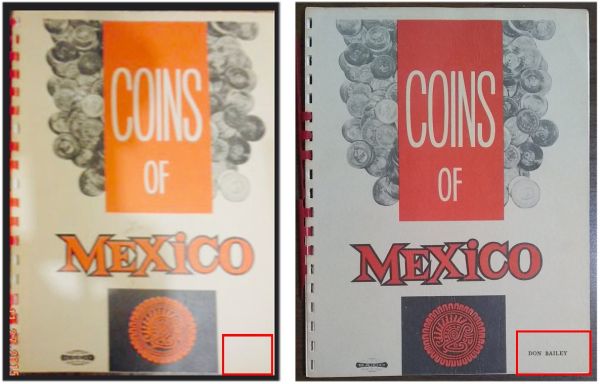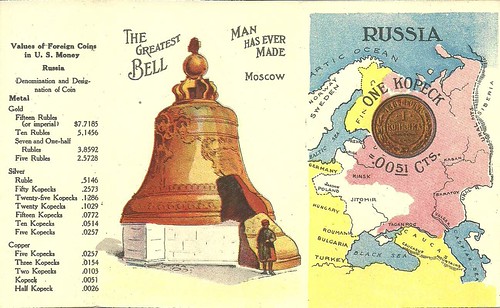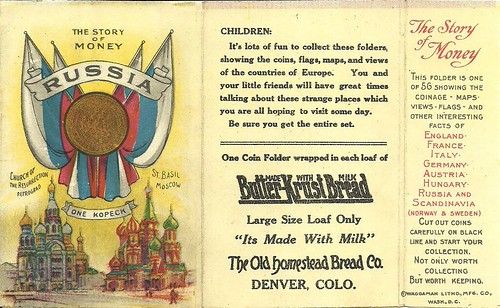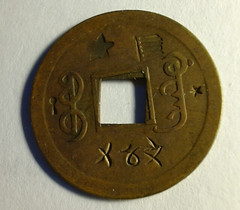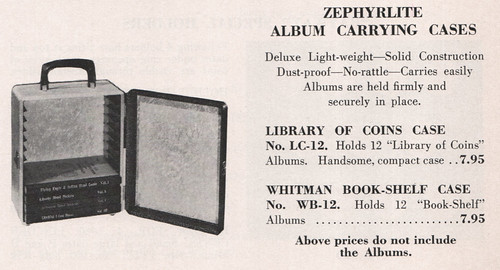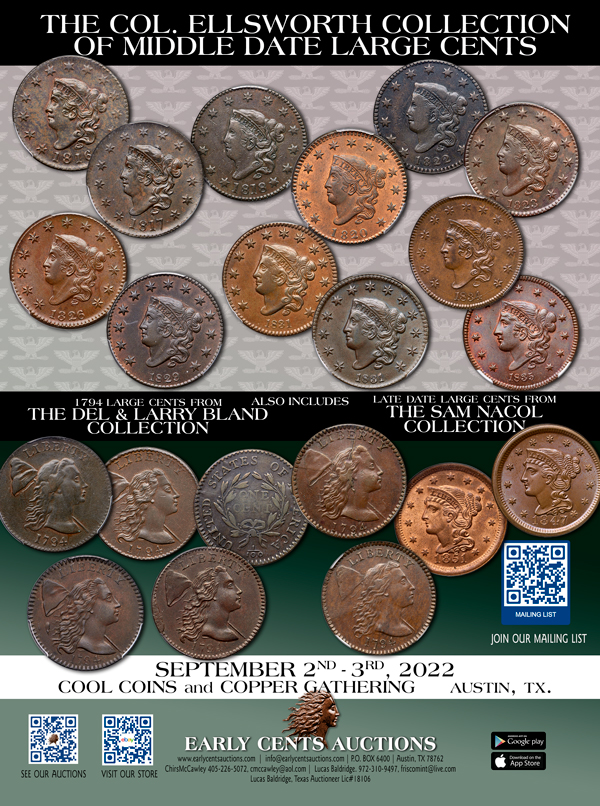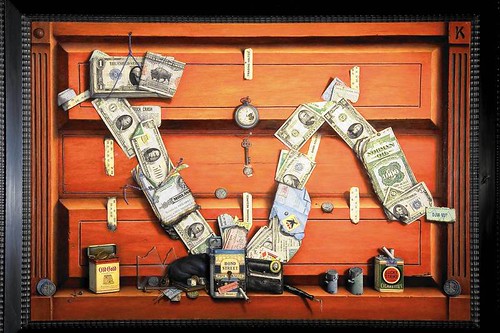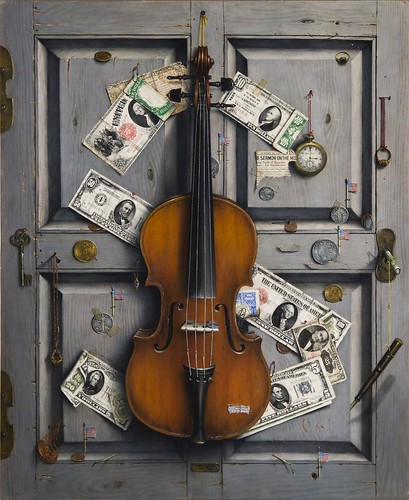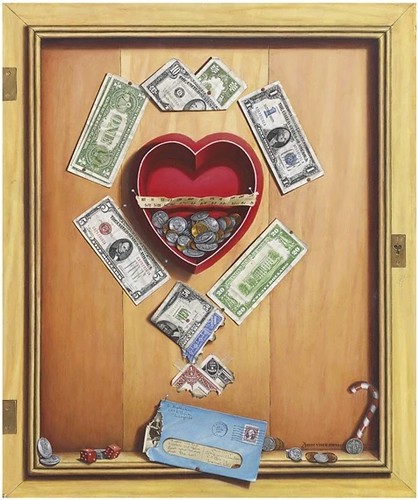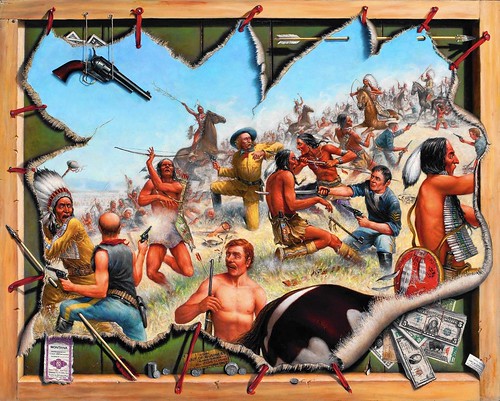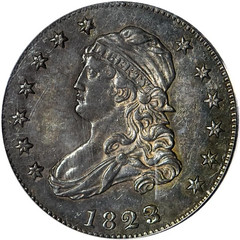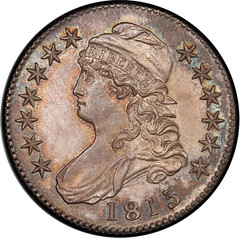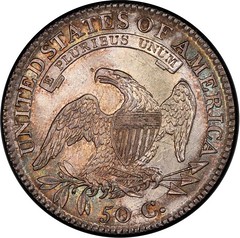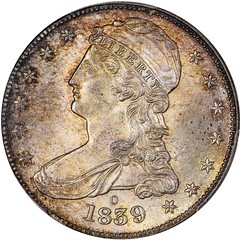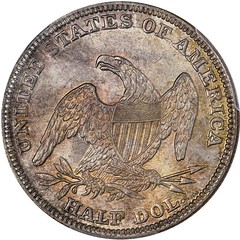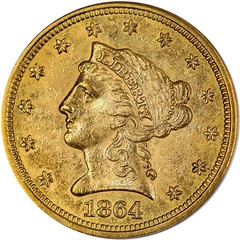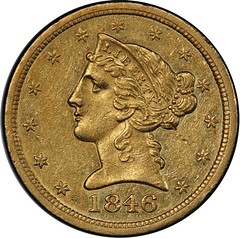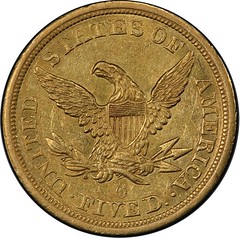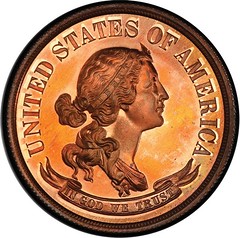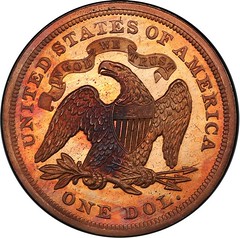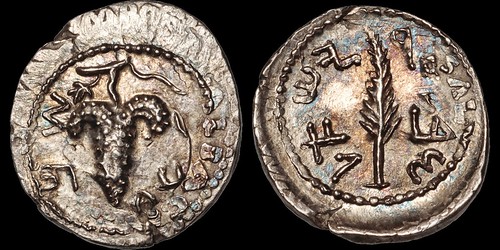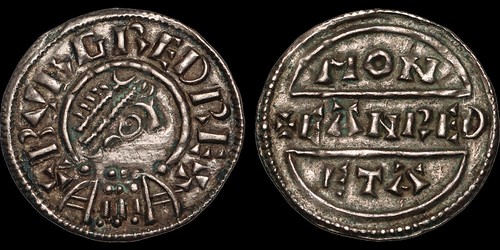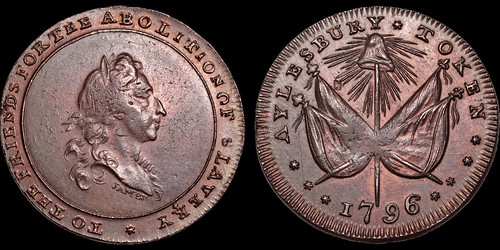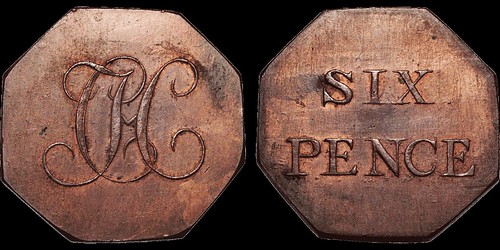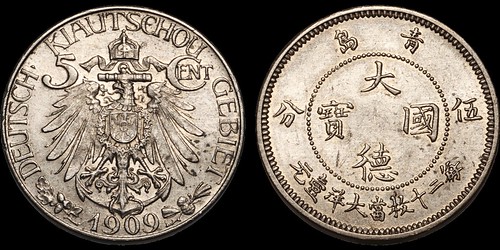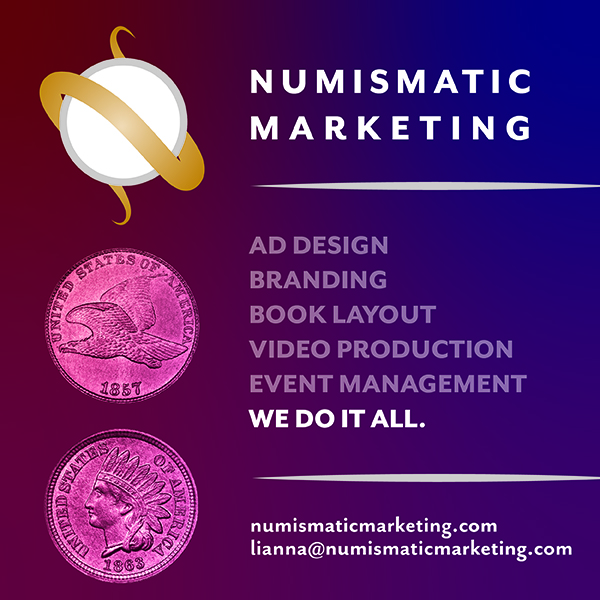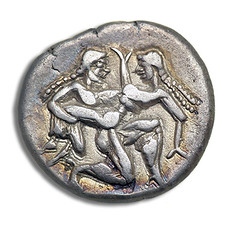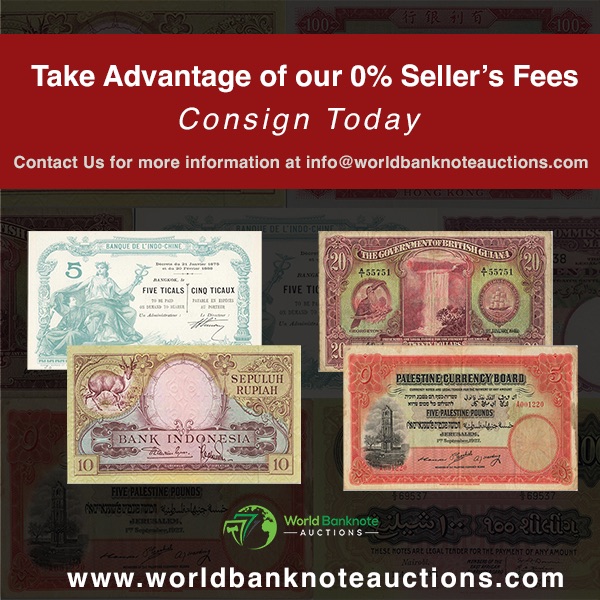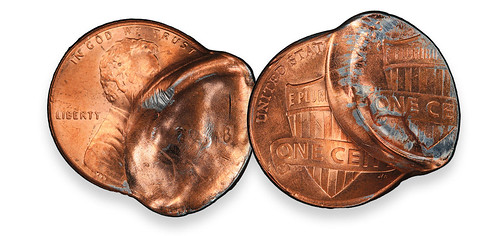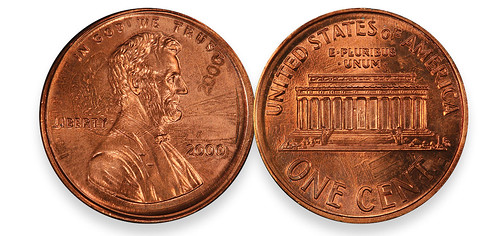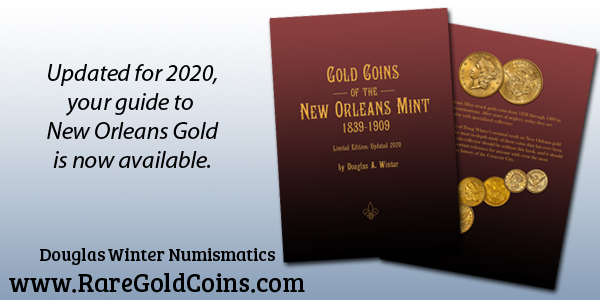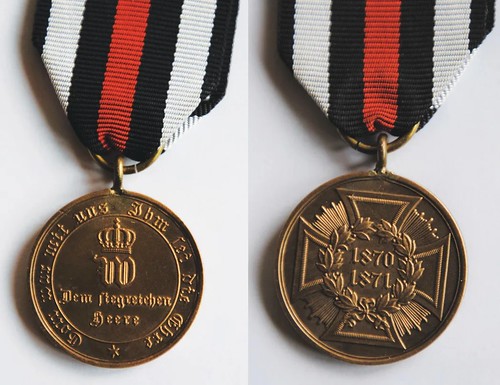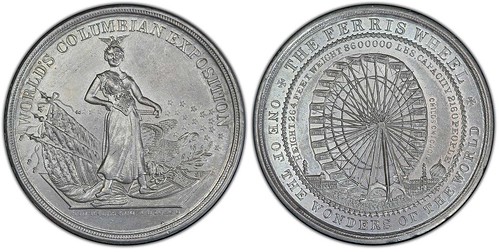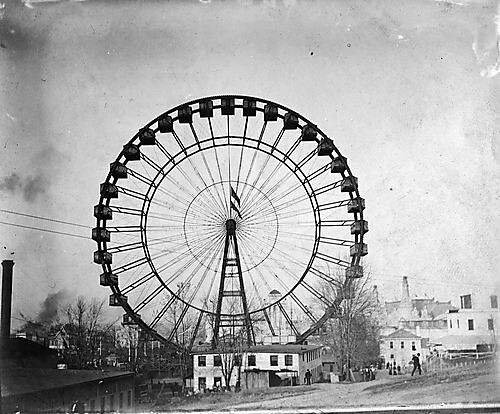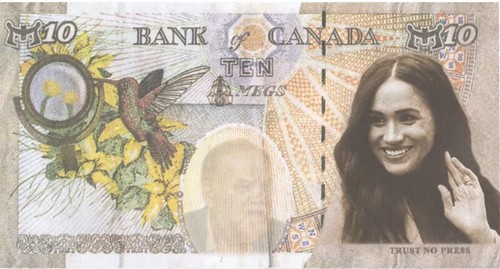
Visit our NBS Sponsors



About UsThe Numismatic Bibliomania Society is a non-profit association devoted to the study and enjoyment of numismatic literature. For more information please see our web site at coinbooks.org SubscriptionsThose wishing to become new E-Sylum subscribers (or wishing to Unsubscribe) can go to the following web page link MembershipThere is a membership application available on the web site Membership Application To join, print the application and return it with your check to the address printed on the application. Print/Digital membership is $40 to addresses in the U.S., and $60 elsewhere. A digital-only membership is available for $25. For those without web access, write to: Charles Heck, Treasurer AsylumFor Asylum mailing address changes and other membership questions, contact Chuck at this email address: treasurer@coinbooks.org SubmissionsTo submit items for publication in The E-Sylum, write to the Editor at this address: whomren@gmail.com BUY THE BOOK BEFORE THE COINSale Calendar |
- WAYNE'S WORDS: THE E-SYLUM AUGUST 28, 2022
- STOCKLEY BOOKS TO OFFER DOUGLAS LIBRARY
- KENNY SAMMUT NUMISMATIC LITERATURE SALE
- NEW BOOK: EARLY PAPER MONEY OF AMERICA 2023
- NEW BOOK: PAPER MONEY OF IRELAND, 2ND ED.
- NEW BOOK: ERRORS AND VARIETIES ON CANADIAN COINS
- NEW PRINTING: MEDALS OF THE CANADIAN MINT
- NEW BOOK: DE SESTERTIO ET TALENTO
- NEW BOOK: MONEY IN EUROPEAN ARTWORKS
- CSNS REVAMPS THE CENTINEL, EXPANDS SHOW
- ROBERT CURTIS KNEPPER (1931-2022)
- ORVILLE "JIM" GRADY (1944-2022)
- VIDEO: NBS EVENTS AT THE 2022 ANA
- VIDEO: SIEGE COINS WITH A TWIST
- DANISH WEST INDIES MEXICAN SILVER
- THE SAICO COINS OF MEXICO BOOK
- NOTES FROM E-SYLUM READERS: AUGUST 28, 2022
- THE WHITMAN EXECUTIVE COIN HOBBY KIT
- 2022 MOST INFLUENTIAL PEOPLE IN NUMISMATICS
- THE STRATOSPHERE OF NUMISMATICS
- VOCABULARY TERM: LIST MEDAL
- OTIS KAYE (1885-1974)
- LEGEND REGENCY AUCTION 54
- DAVISSON'S E-AUCTION 44 SELECTIONS
- EROTICISM ON ANCIENT COINS
- DOUBLE-STRUCK MINT ERRORS
- KAVANAGH'S INDIAN MUTINY VICTORIA CROSS
- FRANCO-PRUSSIAN WAR MEDALS
- FERRIS WHEEL MEDALS
- 1777 SCOTLAND TRI-COLOURED BANKNOTE
- EXHIBIT: DEFACED! MONEY, CONFLICT, PROTEST
- LOOSE CHANGE: AUGUST 28, 2022
- FEATURED WEBSITE: JOURNAL OF EAST ASIAN NUMISMATICS
Click here to read the thin version on the web
Click here to subscribe
Click here to access the complete archive
To comment or submit articles, reply to whomren@gmail.com
Content presented in The E-Sylum is not necessarily researched or independently fact-checked, and views expressed do not necessarily represent those of the Numismatic Bibliomania Society.
WAYNE'S WORDS: THE E-SYLUM AUGUST 28, 2022
 New subscribers this week include:
Judy Dobbins,
and James.
Welcome aboard!
New subscribers this week include:
Judy Dobbins,
and James.
Welcome aboard!
Thank you for reading The E-Sylum. If you enjoy it, please send me the email addresses of friends you think may enjoy it as well and I'll send them a subscription. Contact me at whomren@gmail.com anytime regarding your subscription, or questions, comments or suggestions about our content.
This week we open with a major numismatic library sale, six new books, two obituaries, updates from the Newman Numismatic Portal, and more.
Other topics this week include the Early Paper Money of America, money in European Artworks, siege coins with a twist, The Centinel, Mexican Silver in the Danish West Indies, the stratosphere of numismatics, List medals, money artist Otis Kaye, auction previews, naughty ancient coins, Ferris Wheel medals, and the Journal of East Asian Numismatics.
To learn more about Scott Douglas, the paper money of Ireland, the first treatise ever written about numismatics, Bob Knepper, Jim Grady, 'Story of Money' trade cards, the Whitman Executive Coin Hobby Kit, the 100 Most Influential People In Numismatics, the Middlesex Christ's Hospital Six Pence, and Satyrs on Staters, read on. Have a great week, everyone!
Wayne Homren
Editor, The E-Sylum
STOCKLEY BOOKS TO OFFER DOUGLAS LIBRARY
An article by Jesse Robitaille in Canadian Coin News discusses the recent purchase of the Scott Douglas numismatic library by Howard Engel of Richard Stockley Books. Howard provided some updates to the article for E-Sylum readers. Thanks, everyone. -Editor
Prominent Canadian numismatist Scott E. Douglas sells his research library to Richard Stockley Books
Manitoba bookseller Howard R. Engel (left) and long-time numismatist Scott Douglas stand before the main stacks of the latter collector's library, where the duo agreed on the sale of the extensive literature collection on July 16.
Long-time collector Scott Douglas, whose decades of hobby experience has brought him widespread numismatic acclaim, has begun disposing of his literature collection through Manitoba dealer Howard R. Engel, proprietor of Richard Stockley Books.
Douglas, a celebrated author, researcher and leader in organized numismatics, considers his literature collection as treasured as any of my numismatic collections,
many of which he has assembled throughout his life. A coin collector since his youth, he began specializing in Canadian tokens and medals in 1992, the same year he dove into organized numismatics. All the while, his hobby endeavours were bolstered by books.
It has taken me many years to put together my library,
said Douglas, who after three decades in organized numismatics plans to retire from many of his leadership roles through 2022. I learned instantly that if I was to get the most out of my collections, I would need to know as much as I could about them.
Books, he added, are an obvious solution.
Over time, my books have proven to be invaluable in my numismatic research. Some books contain information not readily known or available today. Catalogues of numismatic sales, old and new, are the greatest source of information and can offer an answer to the rarity of a numismatic item better than anything else available.
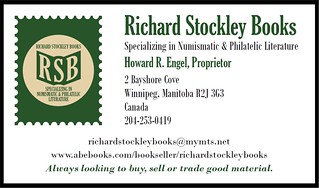 What once filled three large libraries spread across his home – one on each floor – will now serve as the main inventory for Engel's business Richard Stockley Books, which he acquired in 2019.
What once filled three large libraries spread across his home – one on each floor – will now serve as the main inventory for Engel's business Richard Stockley Books, which he acquired in 2019.
I'm most honoured,
Engel, a Winnipeg resident, told CCN during this July's convention of the Royal Canadian Numismatic Association (RCNA) in Ottawa. It's a very significant collection, and he could have had someone auction it off, but he had enough faith in me as a dealer and felt that he would get a fair shake – and it's going to stay in Canada for the most part.
In mid-July, the weekend before the convention, Engel met Douglas at his home in Acton, Ont., to take stock of the collection, including the first three boxes of material he then offered at the RCNA show.
Douglas plans to deliver the next major portion of his literature collection – upwards of 20 boxes of material packed into a rental van – to Engel this April.
There is a degree of sadness for me when I part with anything that has brought me pleasure,
said Douglas. My library is no exception. As I take books off my shelf for the last time, I am often reminded of the circumstances in how I acquired the book. Over the years, I have had great long-distance conversations with numismatic bookseller friends, many of whom have passed away or retired from the trade now.
He recalled many late-night conversations centred on Canadian numismatic literature with late friend Phil Carrigan, of the United States, with whom he was always discussing new finds or buying strategies on items coming up in literature auctions.
After Phil passed away in 2018, I found I really missed those exchanges and still do to this day.
His decision to sell much of his current library is a practical one for the most part,
Douglas added.
In addition to Douglas, Engel recently acquired (either on his way to the RCNA Convention in Ottawa or at that show itself) various literature from long-time numismatist and RCNA Executive Secretary Paul Johnson, retired dealer Ross King of Chesley, Ontario, plus current dealers Gabriel Sebag of Montreal, Henry Neale of Ottawa, Sean Isaacs (Alliance Coin and Banknote, Almonte, Ontario) and Sveto Kovacevic (Ancient Numismatic Enterprise,Toronto). In addition, Engel is very pleased to add to RSB stock surplus material from the extensive collection of numismatic literature specialist, author (including his recently released Medals & Exonumia of the Royal Canadian Mint) and regular Canadian Numismatic Journal columnist (RoyAl Writings) Alan Roy of Hamilton.
To accommodate his new stock, Engel and his wife, Esther Juce, are having a climate-controlled 'book storage room' installed in their backyard.
Engel views his business as a service to both the numismatic and philatelic hobbies. Like Scott's custodianship, Engel considers this service as, above all, a stewardship of valuable research to be passed along from one generation of collector to another. And, even if one is not always able to follow the wise advice of the late New York coin dealer and numismatic literature aficionado Aaron R. Feldman (1894-1976), A.N.A. member no.14033. to "Buy the book before the coin" at least it is never too late to "Buy the book for the coin." Engel has often experienced collectors already in possession of something that they know very little about, approach him to find out more through what germane works might be available in his stock. Herein lies the aptness of what he calls his corollary to Feldman's adage.
Howard can be contacted at richardstockleybooks@mymts.net . -Editor
To read the original article, see:
Scott Douglas Collection of numismatic literature up for sale
(https://canadiancoinnews.com/scott-douglas-collection-of-numismatic-literature-up-for-sale/)
KENNY SAMMUT NUMISMATIC LITERATURE SALE
Kenny Sammut recently completed a summer internship at NGC. He published the following note on his blog today, noting a discount on the numismatic books in his eBay inventory. Check out the selections, books and all. He offers a number of interesting coins, medals and tokens. -Editor
From now through September 30th, Numismatics with Kenny is having a 15% off sale on all books. No coupon needed.
While you are visiting the store, please click on your favorite collecting categories to view all of my world and US coin, exonumia, and currency listings.
I added over $25,000 in new listings this past week. Be sure to take advantage of the listings that offer a savings coupon (you will see the coupon noted on the items page).
The store now has over 19,000 sales totaling approximately 23,000 items in the past three years. I am proud to have a 100% rating on eBay. I sincerely thank all of my past customers for their continued support.
If you do not follow my store, please do so. You will be notified when I add new listings so you can be the first to take a look at the item.
To visit my store, please click here:
https://www.ebay.com/str/numismaticswithkenny
To read the complete article, see:
15% Off Numismatic Books Sale and $25,000 in new coin and exonumia listings. Corrected with link.
(https://numismaticswithkenny.com/2022/08/28/15-off-numismatic-books-sale-and-25000-in-new-coin-and-exonumia-listings-corrected-with-link/)
NEW BOOK: EARLY PAPER MONEY OF AMERICA 2023
The 2023 Edition of Early Paper Money of America is now available from the publishers of the Greysheet. Here's the press release. -Editor
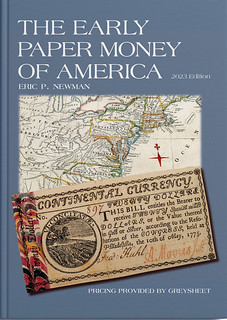 CDN Publishing announced the publication of the 2023 Edition of
Early Paper Money of America, the seminal reference book on the first circulating currencies of North
America. Authored by the renowned scholar, numismatist, and collector Eric P. Newman, this is the first new edition since 2008.
CDN Publishing announced the publication of the 2023 Edition of
Early Paper Money of America, the seminal reference book on the first circulating currencies of North
America. Authored by the renowned scholar, numismatist, and collector Eric P. Newman, this is the first new edition since 2008.
At 472 pages, this edition features hundreds of full color images, replacing the black and white plates of earlier editions. Pricing has been completely updated by CDN Pricing Editor, Patrick Ian Perez, a leading specialist for numismatic pricing.
The EPMOA, as it is commonly known, is the seminal body of work on this important and historic
numismatic subject. According to Perez, there is simply no comparable work in existence that comes
close to the decades-long efforts of Eric Newman. It has been an honor and a privilege to participate in
bringing the much-needed 2023 Edition to life.
The reference covers the latest research in the field which includes all of the thousands of known scrip issued officially and privately from the Continental Congress, the original 13 colonies, and Louisiana.
Other improvements include an improved typeface, overall design, and updated cover. A digital edition of the book is available immediately at www.greysheet.com. Printed copies will be available in hardcover only and will start shipping in early September. The work is priced at $100 for the digital version and $150 for the hardcover version, or a combined price of $200. Existing subscribers to Greysheet products will be offered a 20% discount.
Visit for an online sample of the book and to place an order. Copies of the hardcover book will also be available from trusted numismatic dealers nationwide. Please inquire with orders@greysheet.com for bulk pricing.
Product Specifications:
- Publisher: CDN Publishing
- Author: Eric P. Newman
- Copyright Date: 2022
- Editor: Leonard Augsburger
- Pricing Editor: Patrick Ian Perez
- Binding: Hardcover
- Pages: 472
- Printing: Four-color
- Size: 8.5" x 11" x 1.25"
- Weight (each): 4.44 lbs
- Case count: 10
- Case weight: 45 lbs.
- Printed in the U.S.A.
Newman Numismatic Portal Project Coordinator Len Augsburger adds:
"The NNP edition of the Early Paper Money of America remains freely available at https://nnp.wustl.edu/library/imagecollection/513468 and is actively updated. This latest print edition from CDN Publishing is authorized by the Eric P. Newman Numismatic Education Society and represents a snapshot of the NNP edition. The CDN print edition further incorporates current pricing information and numerous color images. Comments on either the NNP or print edition are welcome at NNPCurator@wustl.edu."
For more information, or to order, see:
Early Paper Money of America (Newman)
(https://www.greysheet.com/publications/early-paper-money-of-america-eric-newman)
Here's a link to the sample publication viewer:
https://www.greysheet.com/pdfsample/epmoa_sample
NEW BOOK: PAPER MONEY OF IRELAND, 2ND ED.
Pam West has published a second edition of the book on the paper money of Ireland. She announced these details in her latest email Newsletter 206 A Bank Note Affair. -Editor
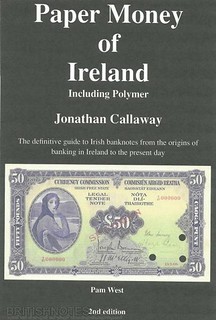 The long awaited Paper Money of Ireland 2nd Edition is now in stock. 744 pages by Jonathan Callaway - now out weighing 1.8kg. Can be purchased on our website stock ID:52518 £60.
The long awaited Paper Money of Ireland 2nd Edition is now in stock. 744 pages by Jonathan Callaway - now out weighing 1.8kg. Can be purchased on our website stock ID:52518 £60.
Post in UK mainland £6
Post to Ireland / Europe £17
Post to USA £28
Post to Australia £32
Our system cannot cope with all the variations, please enquire for postage charge to your country.
Combine your order with a fellow collector to save on postage.
Here is some additional information from the earlier article on the first edition, which won the book of the year award from the International Bank Note Society (IBNS). -Editor
This book took well over 10 years' research by the authors to complete. It is by far the most comprehensive book on Irish banknotes covering all of Ireland and detailing every note issued by every bank since the 17th century. The book contains a vast amount of historical background information as well as exhaustive details of the notes themselves.
An easy to follow cataloguing system enables the amateur/specialist to seek information on any specific Bank/banknote.
The book also covers related areas such as the early Tradesman issues, Prisoner of War issues, Republican bonds and other items broadly falling under the definition of paper numismatics.
This is a treasure trove of new information for the banknote collector and researcher. Mention is also given to such disperate elements as Irish Republican Bonds, early cheques, skit notes, lottery tickets, circular notes and travellers' cheques.
The catalogue entries are clearly and precisely laid out with each note fully described with details of signatures, dates and prefix + serial number ranges when appropriate. Pricing estimates are given for each note in a range of conditions that are appropriate to the age of each separate issue. Colour Trial, Proof, Specimen and Replacement notes are included whenever these are known.
Irish paper money is a complex topic and this catalogue, quite correctly, makes no attempt to simplify. Instead it does a wonderful job of providing the essential detailed information, in an easy to follow format, that the collector needs in order to fully comprehend the full range of material that is available. This is a great banknote catalogue and an essential buy for anyone with an interest in Irish paper money.
For more information, see:
PAPER MONEY of IRELAND - 2nd Edition - OUT NOW
(http://www.britishnotes.co.uk/?page=stock_item&categoryid=18&stockid=52518)
To read the earlier E-Sylum article, see:
NEW BOOK: PAPER MONEY OF IRELAND
(https://www.coinbooks.org/esylum_v13n27a08.html)
NEW BOOK: ERRORS AND VARIETIES ON CANADIAN COINS
A new volume in Christian Houle's series on Canadian coin errors and varieties has been released. The new one covers the five cents coins minted between 1982-2021. -Editor
These publications about errors and varieties on 1 Cent (2018) and 5 Cents (2021) minted during the Queen Elizabeth era (1953-1981). Released in July 2022 is 5 Cents minted between 1982-2021. The books are presented in both French (original) and English translation. The author has developed and adopted classifications, terminologies and conventions that are now standard in the hobby. Both books have a pricing table. The guides are a visual pleasure, printed in full colour, glossy paper, spiral bound. These guides are meant for someone just starting to collect coins with errors and for those who have been collecting them for a while.
Volume 1 (1 cent) : 1953-2012. 274 pages, 1500 listings, nearly 1800 images – Also available on USB Drive (for PC only)
Volume 2 (5 cents) : 1953-1981. 242 pages, 1500 listings, over 1800 images – Also available on USB Drive (for PC only)
Volume 2 (5 cents): 1982-2021. 296 pages, over 1400 listings, over 1800 images.
For more information, or to order, see:
GUIDE TO ERRORS AND VARIETIES ON CANADIAN COINS
(https://coinstampsupplies.com/product/guide-to-errors-and-varieties-on-canadian-coins/)
To read the earlier E-Sylum articles, see:
NEW BOOK: ERRORS AND VARIETIES ON CANADIAN COINS
(https://www.coinbooks.org/v21/esylum_v21n43a02.html)
BOOK REVIEW: ERRORS AND VARIETIES ON CANADIAN COINS
(https://www.coinbooks.org/v21/esylum_v21n48a04.html)
NEW PRINTING: MEDALS OF THE CANADIAN MINT
Author Alan Roy has sold out of the first printing of his book on Royal Canadian mint medals, and a second printing has taken place. Here's Alan's report. -Editor
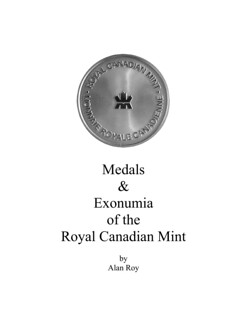 As you know, my book, Medals & Exonumia of the Royal Canadian Mint was recently introduced at the Royal Canadian Numismatic Association's convention in Ottawa. It was well received and I sold out my entire first printing of 50. In fact, I even sold several copies to mint employees! I have printed another small batch and will be bringing them to the Ontario Numismatic Association convention in Mississauga, Ontario September 9-11. If anyone is interested, they can ask for me there, or email me at
alroy477@gmail.com and I'll set aside a copy.
As you know, my book, Medals & Exonumia of the Royal Canadian Mint was recently introduced at the Royal Canadian Numismatic Association's convention in Ottawa. It was well received and I sold out my entire first printing of 50. In fact, I even sold several copies to mint employees! I have printed another small batch and will be bringing them to the Ontario Numismatic Association convention in Mississauga, Ontario September 9-11. If anyone is interested, they can ask for me there, or email me at
alroy477@gmail.com and I'll set aside a copy.
Here's some information from the earlier articles. -Editor
"The Medals & Exonumia of the Royal Canadian Mint" is a 138-page listing of medals issued by Canada's national mint during it's more than one hundred years of operation. It includes all known medals made and distributed by the mint. These include pieces sold directly to the public, issued in conjunction with events sponsored by the mint, and distributed at meetings or trade shows. It also includes medals issued as tokens of appreciation to employees. Another section of the catalogue lists medals featuring the Royal Canadian Mint as a theme.
Technical information:
Card covers, spiral-bound
8.5 X 11 inches
138 pages
Printed in black and white
Priced at $18.95 CAD
To read the earlier E-Sylum articles, see:
NEW BOOK: MEDALS OF THE ROYAL CANADIAN MINT
(https://www.coinbooks.org/v25/esylum_v25n26a02.html)
NOTES FROM E-SYLUM READERS: JULY 3, 2022 :
Update on Medals and Exonumia of the Royal Canadian Mint
(https://www.coinbooks.org/v25/esylum_v25n27a12.html)
NEW BOOK: DE SESTERTIO ET TALENTO
Mitch Fraas is a senior curator for special collections at the Kislak Center for Special Collections, Rare Books and Manuscripts at the University of Pennsylvania Libraries. He passed along this new publication about one of the earliest examples of numismatic literature. Thank you! -Editor
Mitch writes:
"I've just gotten a copy of this first edited edition (in English and Italian) of what is claimed to be the "first treatise ever written about numismatics." One of the three known manuscript copies is in the collection which I'm responsible for here at Penn and I'm very glad to see this text getting wider circulation."
DE SESTERTIO ET TALENTO - PORCELIO DE' PANDONI
 Porcelio de' Pandoni's De sestertio et talento is a work of extraordinary interest for the history of Humanistic and Renaissance antiquarianism. This short work was written in the middle of the fifteenth century, and it throws new light on a little-known aspect of the vast and varied humanist learning. Moreover, to the best of our knowledge, it is the first treatise ever written about numismatics.
Porcelio de' Pandoni's De sestertio et talento is a work of extraordinary interest for the history of Humanistic and Renaissance antiquarianism. This short work was written in the middle of the fifteenth century, and it throws new light on a little-known aspect of the vast and varied humanist learning. Moreover, to the best of our knowledge, it is the first treatise ever written about numismatics.
Although its origins are not entirely clear, it was completed in Milan. In a prefatory letter, in fact, Pandoni offers the work to the powerful secretary of Francesco Sforza, Cicco Simonetta. In fact, as Andrew Burnett speculates, it is possible that the letter of dedication contains statements that are only partially accurate and that the treatise was originally written in Rome, the city in which Pandoni was trained and in whose cultural milieu he had had close ties to the Colonna family, and in particular to Cardinal Prospero Colonna, a well-known patron with strong interests in antiquities. If so, it was re-purposed, a typical practice of Pandoni, and, in his dedication, he placed the interest, the fascination and the antiquarian and numismatic curiosity that had brought about the writing of the short treatise, in a Milan context.
A critical edition is offered here for the first time (by Nicoletta Rozza), accompanied by a full commentary (by Andrew Burnett), and with a double translation, into both Italian and English.
Andrew Burnett was Deputy Director of the British Museum from 2002 to 2013, having begun his career at the Museum in 1974 in the Coins and Medals department as Research Assistant. He went on to become Deputy Keeper in 1990 and Keeper in 1992. He is a past President of the Royal Numismatic Society, the Roman Society, and of the International Numismatic Commission. His main research interests are in the coinage of Roman Britain; the early Roman coinage of the third century BC; Roman provincial coinage; and the history of Numismatics.
Nicoletta Rozza got a PhD in 2016 in Filologia classica, cristiana e medioevale-umanistica, greca e latina (Classic, Christina, Medieval and Humanistic, Greek and Latin philology) at University of Naples Federico II. From 2017 she used a post-PhD research grant to study Leonardo Pisano's, also known as Fibonacci, Liber abaci, publishing in 2019 the critical edition, with italian translation and comments, of the starting epistle, of the prologus and of the first four chapters of the work. In 2019 she also won a scholarship at the Royal Numismatic Society of London. She is at the moment a researcher in Letteratura latina medievale e umanistica (Medieval and humanistic Latin literature) at University of Naples Federico II, where she makes critical and textual analysis, but also on latin scientific works and on poetry and people of Naples in XV and XVI Century.
There are many firsts in numismatic literature, depending on the qualifications of the claim. While this is likely the "first treatise, there is also the "first numismatic book" (Budé's De Asse et partibus) and the "first illustrated numismatic book (Fulvio's Illustrium Imagines). I reached out to literature dealer George Kolbe and his comment is below. -Editor
George writes:
"It seems to me that I have seen mention of this work, attributed to Porcellius, perhaps in Clain-Stefanelli/Babelon. It is interesting that it was written about the time that Gutenberg was printing his famous bible."
For more information, or to order, see:
DE SESTERTIO ET TALENTO - PORCELIO DE' PANDONI
(https://www.loffredoeditore.com/en/component/virtuemart/article/de-sestertio-et-talento-porcelio-de-pandoni-detail?Itemid=2044)
NEW BOOK: MONEY IN EUROPEAN ARTWORKS
Mitch Fraas also alerted me to this new book published by Amsterdam University Press. Thanks! -Editor
Money Matters in European Artworks and Literature, c. 1400-1750
Edited by: Natasha Seaman and Joanna Woodall
In the series Visual and Material Culture, 1300 –1700
About this book
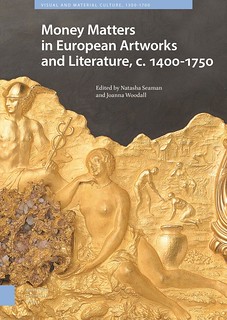 This is the first book to focus on coins as material artefacts and agents of meaning in the arts of the early modern period. The precious metals, double-sided form, and emblematic character of coins had deep resonance in European culture and cultural encounters. Coins embodied Europe's impressive power and the labour, increasingly located in colonised regions, of extracting gold and silver. Their efficacy depended on faith in their inherent value and the authority perceived to be imprinted into them, guaranteed through the institution of the Mint. Yet they could speak eloquently of illusion, debasement and counterfeiting. A substantial introduction precedes paired essays by interdisciplinary scholars organised around five themes: power and authority in the Mint; currency and the anxieties of global trade; coins and persons; coins in and out of circulation; credit and risk. A thought-provoking Afterword focused on an American contemporary artist demonstrates the continuing expressive and symbolic power of numismatic forms.
This is the first book to focus on coins as material artefacts and agents of meaning in the arts of the early modern period. The precious metals, double-sided form, and emblematic character of coins had deep resonance in European culture and cultural encounters. Coins embodied Europe's impressive power and the labour, increasingly located in colonised regions, of extracting gold and silver. Their efficacy depended on faith in their inherent value and the authority perceived to be imprinted into them, guaranteed through the institution of the Mint. Yet they could speak eloquently of illusion, debasement and counterfeiting. A substantial introduction precedes paired essays by interdisciplinary scholars organised around five themes: power and authority in the Mint; currency and the anxieties of global trade; coins and persons; coins in and out of circulation; credit and risk. A thought-provoking Afterword focused on an American contemporary artist demonstrates the continuing expressive and symbolic power of numismatic forms.
Author information
Natasha Seaman is Professor of Art History at Rhode Island College. She is the author of Hendrick ter Brugghen and the Theology of the Image. Reinventing Painting after the Reformation in Utrecht (Ashgate 2012) and several articles relating to the work of the Utrecht Caravaggisti.
Joanna Woodall is Professor of Art History at The Courtauld Institute of Art. She specialises in Netherlandish visual culture during the age of global expansion. Her recent publications have focused on love and money, and sometimes the exchange between the two.
Language: English
Publisher: Amsterdam University Press
Copyright year: 2022
Audience: Professional and scholarly;
Pages: 326
Illustrations: 76
Coloured Illustrations: 76
The book is a collection of essays on various topics including Allegory of Coinage in the Dutch Republic, Gold on the Rijksmuseum's Box of the Dutch West India Company, and Debased Coinage in Shakespeare's Plays. It only appears to be available as a .pdf, however. -Editor
For more information, or to order, see:
Money Matters in European Artworks and Literature, c. 1400-1750
(https://www.degruyter.com/document/doi/10.1515/9789048555789/html)
CSNS REVAMPS THE CENTINEL, EXPANDS SHOW
This press release from the Central States Numismatic Society describes some big changes to the organization's logo, flagship publication and annual convention. -Editor
 To provide even more service to collectors and dealers, the Central States Numismatic Society (www.CSNS.org) has enlarged the format of its quarterly publication, The Centinel, to a full-sized, glossy magazine, and will again expand its annual CSNS convention and provide additional security measures beginning with the April 2023 show.
To provide even more service to collectors and dealers, the Central States Numismatic Society (www.CSNS.org) has enlarged the format of its quarterly publication, The Centinel, to a full-sized, glossy magazine, and will again expand its annual CSNS convention and provide additional security measures beginning with the April 2023 show.
Founded in 1939, the Midwest-based organization is open to prospective members throughout the United States as well as other countries. CSNS recently adopted an updated new logo and new slogan, Building Collector Community.
The magazine's new editor, Barbara Gregory, former editor of the American Numismatic Association's official publication, The Numismatist, worked over the last six months to reimagine the CSNS flagship publication. The Centinel has modernized its format with full-color illustrations and added to its informative editorial content starting with the just-issued Summer 2022 edition.
The previous format of the magazine was 5½ by 8½ inches. The new size is 8⅜ by 10⅞ inches.
We hope to offer three feature articles per issue, selected from solicited and unsolicited manuscripts by writers within the CSNS sphere,
Gregory explained.
Midwestern topics will be encouraged but not required. Each issue also will feature regular columnists, who will address a variety of basic numismatic subjects, among them U.S. coins, ancients, world numismatics, and tokens and medals.
This will provide readers a broad selection of topics on a continuing basis,
said Gregory.
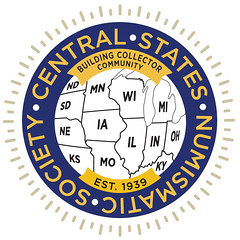 An annual highlight of the national coin show circuit is the Central States Numismatic Society Anniversary Convention, held in the Chicago suburb of Schaumburg, Illinois. During the 2020 and 2021 Covid-related cancelations of the annual conventions, the CSNS Board of Directors and new Convention Manager Larry Shepherd developed plans to revitalize the convention and the organization.
An annual highlight of the national coin show circuit is the Central States Numismatic Society Anniversary Convention, held in the Chicago suburb of Schaumburg, Illinois. During the 2020 and 2021 Covid-related cancelations of the annual conventions, the CSNS Board of Directors and new Convention Manager Larry Shepherd developed plans to revitalize the convention and the organization.
Security and safety are major concerns by dealers and collectors, and we have been closely working with the professional team at Positive Protection, Inc. to provide even more security for CSNS convention attendees,
said Shepherd.
The April 2022 convention was expanded to accommodate 272 dealers at 489 tables in 340 booths. Shepherd is working to add additional bourse space for more dealers at the 2023 show that will be open to the public from Thursday to Saturday, April 27 to 29. There will be a PNG Day event sponsored by the Professional Numismatists Guild (www.PNGdealers.org) on Wednesday, April 26.
The 84th CSNS Anniversary Convention will be at the Renaissance Schaumburg Convention Center Hotel. Additional information about the convention, including hotel reservations and a schedule of events, will be posted at www.CSNS.org/convention. Professional Coin Grading Service (www.PCGS.com) is the Grand Sponsor of the convention.
CSNS members receive free convention admission and an annual subscription to The Centinel. Regular membership is $30 per year. To join, contact Membership Coordinator Jack D. Huggins, P.O. Box 24267, Belleville, IL 62223, or email secretary@CSNS.org.
Great news all-around. Barbara Gregory is the Queen of numismatic publication editors, having taken the ANA's official journal to ever-greater heights over her long and distinguished career there before her recent retirement. The new magazine and logo look great, it will continue to be a fine publication. -Editor
For more information, see:
http://www.csns.org/
To read the earlier E-Sylum articles, see:
NUMISMATIST EDITOR BARBARA GREGORY RETIRING
(https://www.coinbooks.org/v23/esylum_v23n13a22.html)
BARBARA J. GREGORY NAMED CENTINEL EDITOR
(https://www.coinbooks.org/v24/esylum_v24n50a09.html)
ROBERT CURTIS KNEPPER (1931-2022)
Longtime E-Sylum subscriber Bob Knepper passed away earlier this year. Last week we discussed his "Wildman" collection being sold by Stack's Bowers. His daughter Ann provided this photo and obituary. Thank you. -Editor
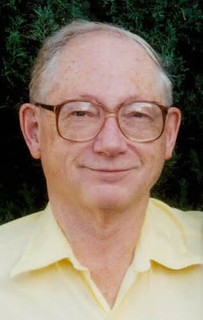 Robert Curtis Knepper died on January 31, 2022 at Park Vista, Morningside, Fullerton, just
shy of his 91st birthday. His loving wife of 68 years, Sue Knepper, and his daughters were
taking care of him.
Robert Curtis Knepper died on January 31, 2022 at Park Vista, Morningside, Fullerton, just
shy of his 91st birthday. His loving wife of 68 years, Sue Knepper, and his daughters were
taking care of him.
He was born on February 13, 1931 in Greensburg, Pennsylvania to Mabel and Curtis Knepper and was their only child. He earned an engineering degree from Carnegie Institute of Technology in 1952 and a Masters in 1953. He enjoyed his membership in Sigma Nu.
He married Susan Harmon, a beautiful nurse he met at a dance, on October 10, 1953. Bob and Sue moved to California and began their long-term enthusiasm for the California lifestyle of sun, surf and sports.
Bob took a job in the burgeoning aerospace industry, including over 30 years working for Hughes Aircraft. He programmed in Fortran in the late 1950s, worked on developing flat screen display systems, and advancing information display technology.
He had an excellent understanding, deep appreciation, and joy in the progress of computers and other areas of technology both in his fields and in general. He was a founding member and chairman of the Society for Information Display and participated in furthering the organization, which grew into an international organization.
Bob and Sue traveled to many parts of the world, including Europe, the Middle East, Africa, China and Thailand. They enjoyed and excelled in playing duplicate bridge. He collected coins, specializing in German Wildman coins and made many trips to Germany to collect coins and visit friends.
He valued the extended family get togethers in Carpinteria and broadened his family genealogy charting to Sue's large and rambunctious Harmon clan. He also treasured his friends from work, bridge, OLLI and Morningside.
He is survived by his loving wife of 68 years and their three daughters, Linda, Ann, and Valerie. They were given five grandchildren, Diane, Tomas, William, Daniel and Calvin, and foster grandson Steven. They loved visits with Bob's cousin Fred and his wife Patty.
He will be deeply missed by his family. We loved him very much and always knew he loved us.
Vicken Yegparian of Stack's Bowers pointed me to the bio of Bob in the catalog for their Summer 2022 Global Showcase Auction of Ancient and World Coins, which included Bob's collection. With permission, we're excerpting it here. Thank you. -Editor
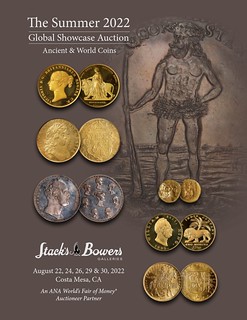 Robert Curtis Knepper died in early 2022, just shy of
his 91st birthday. He spent much of his 90 years enjoying
numismatics. As with many collectors Bob's first purchases
were made as a teen, back in the 1940s. Some of his first coins
were purchased from famed coin dealer David Bullowa, and
comprised typical American series, beginning with small
cents. He soon ventured into other denominations and
eventually worked on a type set housed in old paper envelopes
and Whitman albums.
Robert Curtis Knepper died in early 2022, just shy of
his 91st birthday. He spent much of his 90 years enjoying
numismatics. As with many collectors Bob's first purchases
were made as a teen, back in the 1940s. Some of his first coins
were purchased from famed coin dealer David Bullowa, and
comprised typical American series, beginning with small
cents. He soon ventured into other denominations and
eventually worked on a type set housed in old paper envelopes
and Whitman albums.
From the outset Bob was meticulous, tracking those earliest acquisitions by keeping ledgers of purchases by hand. He continued that practice for the remainder of his life, carefully recording each coin bought from leading dealers around the world. Common sources listed were Abe Kosoff, Paramount, Seaby, Spink, Wyatt and Ponterio, Bowers and Ruddy, Karl Stephens, Fritz Rudolf Kunker and Munzen und Medaillen, among many others.
Bob's meticulous nature served him well at Carnegie Institute of Technology where he earned an engineering degree in 1952 and a master's degree in 1953.
With his formal education complete, and his career path established, he married Susan Knepper in 1953, a marriage that lasted for 68 years. Bob and Sue enjoyed life in California, taking full advantage of the California lifestyle of sun, surf and sports while tending to the joyous duties of raising three daughters. All the while, Bob enthusiastically worked on his coin collection.
The couple traveled the world together, visiting Europe, the Middle East, Africa, China and Thailand. At some point in the 1970s, Bob's collecting interests turned to the Wildman motif found on German coinage of the 16th to 18th centuries, primarily from Brunswick-Wolfenbuttel and BrunswickLunenburg. He zeroed in on these coins and over the next five decades assembled what is likely the largest collection of this specialty in North America.
We are delighted to have the opportunity to present Robert Knepper's numismatic legacy to another generation of collectors in a series of offerings from his landmark collection.
Bob was a regular contributor to The E-Sylum over the years, both asking and answering research questions. Our archives include multiple pages of references to his name, on topics including word definitions, numismatic libraries and museums in Europe, Danish patterns, Mardi Gras doubloons, and the effects of sunlight on books. I was very sorry to learn that he had passed. He will be missed. -Editor
To read the complete catalog, see:
https://stacksbowers.com/wp-content/themes/stacksbowers/uploads/catalogs/SBG_Summer2022_WorldCoins_Catalog.pdf
To read the earlier E-Sylum article, see:
THE WILDMEN
(https://www.coinbooks.org/v25/esylum_v25n34a25.html)
ORVILLE "JIM" GRADY (1944-2022)
Numismatic literature dealer Orville "Jim" Grady has passed. Thanks to Stephen Searle for alerting me. -Editor
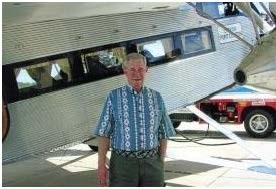 Orville 'Jim' Grady
Orville 'Jim' Grady
March 9, 1944 - August 22, 2022
Orville "Jim" Grady, 78 years, of Fremont, Nebraska, passed away Monday, Aug. 22, 2022, at his home.
He was a husband, father, student, soldier, numismatist, and bookseller born on March 9, 1944, in Dodge County, Fremont, Nebraska, to Lowell and Eva Grady. Orville was the eldest of five children – sisters: Judy (Everly) and Denise; brothers Thoms and (Kevin deceased). Married Debra (Piper) in 1973, they had one daughter, Jennifer. Graduated from Fremont High School in 1962, served seven years in the United States Army from Jan. 19, 1965, to Jan. 27, 1972.
Orville took basic training at Fort Leonard Wood, Montana, subsequently assigned to Crete and Louisville, Nebraska (Nike Hercules Missile sites); Fort Bliss, Texas (Battery "B", 4th Battalion, 62nd Artillery); Fort Sill, Oklahoma (Pershing NCO School). Served two tours of duty in Germany, Team B, 508th USA Artillery Detachment at Erle (nuclear NATO Nike Site) hosted by 221st Royal Dutch Air Force and Battery D, 4th Battalion, 41st Artillery in Schwabish-Gmund (Pershing Nuclear Missile Unit) earned several letters of commendation at each unit in which he served. Graduated Cum Laude from the University of Nebraska at Omaha in 1978 earning a Bachelor's of Arts Degree in International Studies and with a German Language minor, member of the German Honor Society.
Orville's passion throughout his life was Numismatics; bought and sold Numismatic literature on a part time basis from 1982 to 2015, served as Secretary of the Omaha Coin Club from 1981-1987 and President from 1988-1990, member of the Cataloging Committee of the Byron Reed Historical Society. He was known nationwide for his knowledge of Numismatic Literature, as a collector of United States Indian Wars period tokens and United States Mint Medals issued from 1789 to 1890's. Orville's other passionate interests were International Politics, History, and United States politics.
George Kolbe writes:
"I did not know Orville well. He seemed to be a credit to our field and it was clear he loved books."
Tom Harrison writes:
"I'm sorry to hear that Orville Grady has passed away.I remember purchasing a number of items from his early auction sales in the mid 1980s. While occasionally listing higher end material, the majority of his catalogs listed individual catalogs and periodicals valued from $5.00 to $20.00. I met and enjoyed a nice chat with Orville about 15 years ago when I took my nephew to the Missouri Numismatic Society's annual coin show in St.Louis. Both his cataloging efforts and the challenges of traveling to coin shows were certainly a labor of love. Rest in peace, Orville."
Michael Sullivan writes:
"I met Jim Grady in the early 1990s. Being located in Nebraska gave him access to some Midwest collectors and bookstores from which he secured inventory away from the East Coast/West Coast dealers. We would talk by phone from time to time about the hobby, collectors, auctions, and material he had acquired.
"With the dispersion of the Boys Town
coin collection in 1990 by Superior Galleries, Jim was subsequently able to handle part of the numismatic library collection including some items secured in library sales.
I was fortunate to secure one rare Foote Counterfeit Detector via Boys Town
and Jim.
"He was a pretty pragmatic and humble guy, but never had access to a leading numismatic library, leading to a series of ho hum
literature auction sales. Jim's passing does bring fond memories of when we had numerous numismatic literature dealers, frequent literature auctions, and a bit of collecting frenzy."
Joel Orosz writes:
"Numismatic literature dealers tend to fall into two categories, the Coastal and the Mid-Continent. Most of the marquee collections have been sold by the Coastals, while the Mid-Continent guys tended to offer the meat-and-potatoes collections. O. J. was the consummate Mid-Continent dealer. Rarely did he offer a plated Chapman, or a priced-and-named Woodward, but he was the guy to see if you were trying to fill gaps in your runs of 20th century catalogs, or if you delighted in ephemeral material, or if you were trying to find an obscure reprint, or an offbeat periodical.
Besides having the goods of all descriptions, O. J. had the decency—Minnesota Nice
moved south to Nebraska—to treat everyone with respect and consideration. He was a member of The Silent Generation
who helped to build the pastime of numismatics into a mass hobby. He served us all well, and we who knew him will salute his accomplishments and honor his memory."
"I was sorry to hear about Jim Grady. I remember receiving his mail-bid catalogues in the 1980s, back when there were several numismatic booksellers plying their trade in this country on a full-time or (more generally) part-time basis. His sales always had a lot of useful material in them, even if he didn't usually get to offer the best material on the market. I was pleased when he contacted me a few years ago to help him sell some remaining items, and we had several nice conversations over the course of a year or so. I have fond memories of the hobby in the 1980s and I'm sad to think that another link to that era is no more."
Like many others, I looked forward to Jim's catalogs over the years and often found a few items to buy or bid on for my library. I met him in person once or twice at coin shows, and purchased some numismatic ephemera from him within the last year or so. Sorry to hear this news. -Editor
To read the complete obituary, see:
Orville Grady
(https://www.legacy.com/us/obituaries/fremonttribune/name/orville-grady-obituary?id=36338162)
VIDEO: NBS EVENTS AT THE 2022 ANA
The latest additions to the Newman Numismatic Portal are videos of events at the recently concluded American Numismatic Association World's Fair of Money. Project Coordinator Len Augsburger provided the following report. -Editor
Bibliomania Reigns at the World's Fair of Money
Video from the Numismatic Bibliomania Society annual meeting, held August 19 at the ANA convention, is now posted on Newman Portal. This includes member introductions, President Tom Harrison's award presentations, and a portion of the fundraiser auction conducted by David Fanning. Among the awards, Charles Davis was presented (and greeted with extended applause) the George F. Kolbe Award for Lifetime Achievement in the field of numismatic literature. This meeting also included a video tour of the Joel Orosz library; for reasons of time this video was condensed. The full version is now posted and available for viewing.
On Friday, August 19 at the ANA, NBS Vice-President Len Augsburger presented a Money Talks session on Building a Numismatic Library for Pleasure & Profit.
This presentation covers aspects of building a numismatic library and suggests various approaches to literature collecting. Thanks to Lianna Spurrier of Numismatic Marketing for producing all three of these videos.
Link to NBS 2022 Annual Meeting:
https://nnp.wustl.edu/library/book/617712
Link to Orosz library video tour (extended version):
https://archive.org/details/OroszLibraryTour
Link to ANA Money Talks (Building a Numismatic Library
):
https://nnp.wustl.edu/library/book/617714
VIDEO: SIEGE COINS WITH A TWIST
These are selections from the David Lisot Video Library that feature news and personalities from the world of coin collecting. David has been attending coin conventions since 1972 and began videotaping in 1985. The Newman Numismatic Portal now lists all David's videos on their website at:
https://nnp.wustl.edu/library/multimediadetail/522852
Here's one on siege coins with particularly interesting numismatic aspects. -Editor
NUMISTRIVIA, Historical Notes on Selected Coins
Lawrence C. Korchnak, Ph.D. Numismatic Author,
David Lisot, Video Producer,
CoinTelevision.com. May 20, 2022.
Dr. Korchnak is best known for his book and collection of siege coins. This video features examples of coins struck during sieges that have a different numismatic twist. Learn about the coin from the fall of Constantinople and the cannon that contributed to the defeat, the coin of Henry the VIII and his goading the French, and more. Video taken at the Pennsylvania Association of Numismatists Coin Convention.
Length: 39:04
David adds:
"The Pennsylvania Association of Numismatists (PAN) is dedicated to promoting coin collecting by sponsoring educational lectures. Dr. Korchnak has a Ph.D. in Philosophy from the University of Pittsburgh. He is a long-time member of the PAN organization and a devoted coin collector and researcher. His book, Siege Coins of the World 1453-1902
, is the definitive reference work of the subject. His presentation tells the stories of some of the most unusual numismatic issues ever struck."
An excerpt of the video is available for viewing on the Coin Television YouTube Channel at:
https://youtu.be/abos_Lzb7jM
DANISH WEST INDIES MEXICAN SILVER
A number of readers responded to the question about the term "MEX" on the 1890 Danish West Indies 3 Cent token. -Editor
Ken Eckardt writes:
"Regarding the St. Thomas (Danish West Indies) tokens with MEX in the legend: My understanding, going back many years, is that the series of tokens issued by various businesses in St. Thomas were based on the Mexican Dollar (Peso). As many Mexican Pesos were in circulation on the island the tokens were valued as the Mexican coins which were based on a silver standard, thus preventing a loss to the merchant. Indeed a few tokens issued by A. Burnet and O. French & Co. were countermarked 'MxSlr'."
F. Carl Braun writes:
"With reference to the recent post concerning this token, the term "MEX" stands for "Mexican". At the end of the 19th century, the Mexican peso had become the standard of exchange in many Caribbean countries, where it and its subdivisions were accepted as a means of payment (Puerto Rico, Haiti, Dominican Republic, etc.). A commodity traded as any other, the Mexican peso was bought and sold at prices reflecting the price of silver on the international market. This Russell Brothers token was accepted by the issuer for the equivalent of 3 Mexican peso cents of merchandise."
Henk Groenendijk writes:
"The abbreviation MEX on the Danish West Indies token is for "Mexican", indicating that the token is denominated in Mexican dollar (silver peso) cents and not in gold dollar cents. This is explained in: The Colonial Coinage of the U.S. Virgin Islands by Lincoln W. Higgie, Whitman 1962. The token is described and pictured as number 447 on page 40."
Mark Vitunic writes:
"I didn't respond a week ago because I thought it was a softball! Sometimes the obvious
answer is actually the right one. MEX is short for Mexican. Here's an excerpt from Lincoln Higgie's The Colonial Coins of the U.S. Virgin Islands, page 30: Since many Mexican silver pesos circulated in the islands, it was necessary for the merchants to make change in coins which would not exceed the exchange value of the Mexican Peso which was offered in payment. This need was filled by tokens which were valued after the Mexican monetary system, thus preventing a loss to the shopkeeper.
Other tokens in the 1888-1892 series use the abbreviation MEXIC, MxSlr (Mexican Silver), or fully spell out MEXICAN TOKEN."
B.J. Herbison writes:
"Combining numista.com and tokencatalog.com , there are 2, 3, 5, and 10 cent MEX tokens from 1890.
"For the 10 cent token:
"Higgie# 451, Lincoln W. Higgie; 1962. The colonial coinage of the U.S. Virgin Islands. Whitman Publishing, Racine, Wisconsin, United States.
"SIEG# 48
Jan Bendix; 2017. SIEGs Møntkatalog Norden : Danmark, Slesvig, Nordborg,
Glu¨cksborg, Plo¨n, Gottorp, Dansk Vestindien, Trankebar, Færøerne,
Grønland, Island, Norge : private mønter fra Færøerne,
Grønland, Dansk
Vestindien og Christiania. SIEGs Forlag, Fredrikssund, Denmark."
We've certainly got a consensus on that topic! Thanks, everyone. -Editor
To read the earlier E-Sylum articles, see:
NUMISMATIC NUGGETS: AUGUST 14, 2022 : 1890 Danish West Indies 3 Cent Mex Token
(https://www.coinbooks.org/v25/esylum_v25n33a23.html)
NOTES FROM E-SYLUM READERS: AUGUST 21, 2022 : MEX = Medium of Exchange?
(https://www.coinbooks.org/v25/esylum_v25n34a10.html)
THE SAICO COINS OF MEXICO BOOK
Adrián González-Salinas of Monterrey, Nuevo León, México submitted these notes and images on the 1963 Don Bailey "Coins of Mexico" book published by SAICO. Thank you. -Editor
I read the "PRESIDENT COIN COMPANY ALBUMS" article by David Lange, and I would like to share the following information related to the "Coins of Mexico" book by SAICO:
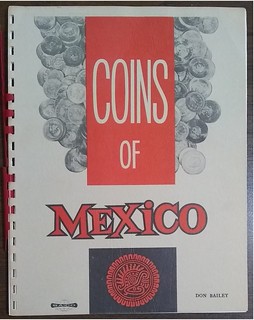 Size: 8.5"x11" (21.6 x 28 mms)
Size: 8.5"x11" (21.6 x 28 mms)
Year: 1963
Pages: (1), blank, 75, blank
Publisher: SAICO (South American Import Corp.)
Address:
821 Quince
McAllen, TX
1st Edition
Author: Don Bailey
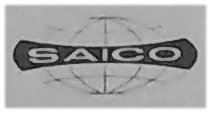
I got this book at the Public Auction # 15 Remy Bourne Apr 05-06, 2002 (Lois & Don Bailey) Lot # 354. My book's copy hasn't openings for any Mexican coin.
Finally, I can see that there are two varieties of this book: one with author name (my copy) and the other one without author's name (David Lange's photo).
To read the earlier E-Sylum article, see:
PRESIDENT COIN COMPANY ALBUMS
(https://www.coinbooks.org/v25/esylum_v25n33a12.html)
NOTES FROM E-SYLUM READERS: AUGUST 28, 2022
More on the Reakirt Collection
David Fanning writes:
"I have not had the time until now to comment on the discussion of the Joseph P. Reakirt sale held by Columbus Stamp & Coin Shop (Major Nile C. and Louise L. Schau) of Columbus, Georgia on March 26, 1963.
"Dave Hirt's original question was whether anyone owned the stand-alone catalogue of this auction. I have a photocopy of it in my library, though not an original. A few things should be noted:
"1. The 1827 quarter was not included in the auction. The introduction states that it "was sold in Detroit at the ANA cov.
"2. There was not an 1857 Flying Eagle cent proof in the auction.
"A note accompanying my photocopy of this catalogue states that, according to Jack Collins, a person later identified as Abe Kosoff or an agent acting on his behalf purchased the entire auction for 5% over the total bids received. This note is, I believe, in Del Bland's handwriting. While it does not constitute anything like proof, it reaffirms the gist of a typewritten note from Louise L. Schau from the time of the auction stating that a firm purchased the entire collection as a basis for founding a numismatic museum.
A prices realized list was published."
Thanks! -Editor
To read the earlier E-Sylum article, see:
NOTES FROM E-SYLUM READERS: AUGUST 21, 2022 : More on the Reakirt Famous Old Collection
(https://www.coinbooks.org/v25/esylum_v25n34a10.html)
On the Larry Swick "Peace Medal" Collection
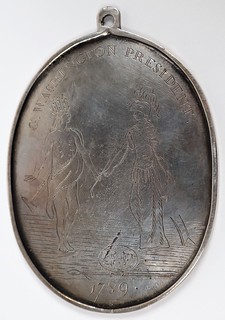 Responding to questions submitted by a couple readers,
Fred Holabird writes:
Responding to questions submitted by a couple readers,
Fred Holabird writes:
"It represents an important cultural event from the 1970s, all related to the Pine Ridge Reservation, the modern-day Indian uprising
and a secondary use
of peace medals, even if for circuitous reasons."
The readers referred to the fakes as "rubbish", and I understand the reaction. While a reference collection of fakes in good hands can be a useful tool, there is the risk of them re-entering the marketplace described as genuine. While I couldn't publish the entire lot description, the lengthy narrative by Fred and Bill Hyder does spell out the contemporary cultural situation and possible reasons for assembling the collection. See the complete lot description online for more. -Editor
To read the complete lot description, see:
Peace Medal Collection of Important Cultural Significance [152641]
(https://holabirdamericana.liveauctiongroup.com/Peace-Medal-Collection-of-Important-Cultural-Significance-152641_i45936018)
To read the earlier E-Sylum article, see:
LARRY SWICK PEACE MEDAL COLLECTION
(https://www.coinbooks.org/v25/esylum_v25n34a21.html)
'Story of Money' Trade Cards Information Sought
Steve Woodland writes:
"It's been nearly nine years since I put out my initial call for help with my research on The Story of Money
tri-fold trade cards (see article at reference). These cute cards, which had pictures and text related to the coinage of various European countries, were a marketing tool found in loaves of bread sold in the US; I guess to entice children to encourage their parents to purchase that brand of bread. I have identified three company's ads on the back of the tri-fold: Butter Krust Bread (Old Homestead Bread Co., Denver, CO), Betsy Ross Bread (Whiteside Bakery), and Günzhauser's American Made Bread; blank backs are also known
"Sadly, the search over the years has only added two new cards to my collection, leaving me with 23 of the 56 cards still to find. And while I know the total number of cards issued, I have not yet been able to compile a complete list (nation, denomination, imagery, card number). If anyone can help, with information, I would be most appreciative."
A fun, but I'm sure quite challenging project. Can anyone assist? Thanks. -Editor
To read the earlier E-Sylum article, see:
QUERY: INFORMATION ON 'STORY OF MONEY' CARDS SOUGHT
(https://www.coinbooks.org/esylum_v16n47a09.html)
American Shoe Co. Rebus Answer
In another blast from the E-Sylum past,
Scott Miller writes:
"Did you ever get any solutions to the American Shoe Co. Rebus#3, listed in the November 1, 2015 and November 15, 2015 editions? I found the paper I was working on when you published it and just figured out the last two symbols. And no, I have not been dwelling on it ever since.
It's never too late to respond to an E-Sylum question; it's not unheard of for answers to come along years later. Here's Scott's completed translation of the rebus puzzle featured on an advertising note. Thanks! -Editor
- Wish to call attention to our nice and
- well selected ties and specially to cable screw
- wire boots and shoes and in order that you may understand
- this mode of securing sole to shoe we hand you a
- spanking picture of its use. The wire is turned when driven
- no housing having first been swept, the wire projections in the same
- are completely imbedded in the leather,
- attaching sole and shoe in a perfect manner superior to all
- other. Do not rip or tear are pliable
- keep their shape longer than nailed or stitched
- A stock of all brands and style of every
- make for sale at the lowest prices.
- Call and examine
To read the earlier E-Sylum articles, see:
REBUS PUZZLE: J. PELS & SON, BALTIMORE. MD
(https://www.coinbooks.org/esylum_v18n44a26.html)
REBUS PUZZLE: AMERICAN SHOE COMPANY
(https://www.coinbooks.org/esylum_v18n46a16.html)
More on the Counterstamped Ching Dynasty Struck Cash Coin
"The late Ching Dynasty struck cash coin proposed to be a communist item may have some significance in plots and intrigue, but the coin says 45 wen (45 cents or maybe 4.5 cents) in "commercial": Chinese writing. A hardly fitting calligraphy style for a communist. The flag above is interesting and may refer to some early Kuomingtong era happening. The writing style was also used in Thai casino tokens.
"I would like to understand the star to the right(or maybe character chih for ten) and the keyhole to the left. I suspect a puzzle."
To read the earlier E-Sylum article, see:
NOTES FROM E-SYLUM READERS: AUGUST 21, 2022 : More on Counterstamped Cash Coins
(https://www.coinbooks.org/v25/esylum_v25n34a10.html)
August Moyaux Sale Catalogue Located
Regarding the August Moyaux sale catalogue sought by David Pickup,
Gary Oddie writes:
"There is a copy in the Fitzwilliam Museum Coin & Medal department Library of catalogues etc built up by Ted Buttrey."
Thanks also to Yosef Sa'ar and Eric Hodge for their offers of assistance. -Editor
To read the earlier E-Sylum article, see:
NOTES FROM E-SYLUM READERS: AUGUST 21, 2022 : August Moyaux Sale Catalogue Sought
(https://www.coinbooks.org/v25/esylum_v25n34a10.html)
THE WHITMAN EXECUTIVE COIN HOBBY KIT
In the latest issue of his Coin Board News newsletter, author Dave Lange shared photos of the rare Whitman Executive Coin Hobby Kit and other seldom-seen hobby accessories from the 1960s. With permission I'm republishing the article here. Thanks. -Editor
 SOME FORGOTTEN ITEMS REVEALED My books on the products of both the Coin & Currency Institute
and Whitman Publishing Company made reference to certain products that were likely to have been produced but
had not yet been seen. The recent acquisition of a supply catalog published in 1964 by the Omaha dealership of
Aubrey and Adeline Bebee revealed both images and pricing for three products that previously were in the dark.
I'm reproducing those images here as a supplement to those books.
SOME FORGOTTEN ITEMS REVEALED My books on the products of both the Coin & Currency Institute
and Whitman Publishing Company made reference to certain products that were likely to have been produced but
had not yet been seen. The recent acquisition of a supply catalog published in 1964 by the Omaha dealership of
Aubrey and Adeline Bebee revealed both images and pricing for three products that previously were in the dark.
I'm reproducing those images here as a supplement to those books.
The first photo shows Whitman's Executive Coin Hobby Kit, which is described on pages 11-12 of Volume Three. The Bebee catalog reveals that the bulk of its $26.95 price (a whopping amount of money in the ‘60s) was due to the attaché case rather than its contents! I seriously doubt that more than a very few of these were sold.
Far more practical would have been the album carrying case seen in the second image. I recall one of these being offered on eBay years ago with a really terrible photo, but that was long before I believed there really was such a thing. I'd love to have one now, but I've never seen it listed since that time. A similar product for Whitman's folders was produced under the Laymond brand, and this is illustrated on page 45 of Volume Three.
Finally is the slip case made for Whitman folders. I do have a number of these, and I'm surprised the company could have sold them so cheaply even then. The 35¢ retail price was the same as that of the folders 1953-67, but the materials surely must have cost more. Perhaps, it was viewed as a loss leader.
To view Dave's website, see:
https://www.coincollectingboards.com/
2022 MOST INFLUENTIAL PEOPLE IN NUMISMATICS
Coin World has published their 2022 special issue with their 100 Most Influential People In Numismatics list. While there is naturally a lot of overlap with the inaugural 2021 list, there is also churn as people pass away, fade from the headlines, or make bold career moves.
Last year's list generated a great deal of discussion here and elsewhere - see the earlier articles linked below for background. One E-Sylum reader has already chimed in with an analysis (and suggestion for an alternate list) - here it is with my commentary. -Editor
and Numismatic Literature
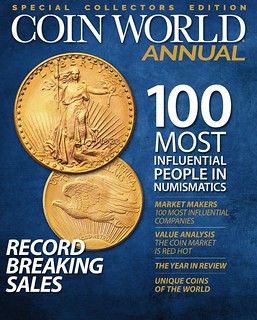 This week I received the Coin World Annual issue listing the 100 Most Influential People in
Numismatics. It occurred to me that numismatic leaders fall into three basic groups. For
commercial numismatics there are dealers, auction houses and third-party grading services.
Hobby leaders include officers and volunteers in local, regional and national clubs. Numismatic
science falls to researchers, writers and publishers of numismatic literature. The Coin World list
is heavily skewed toward commercial numismatics.
This week I received the Coin World Annual issue listing the 100 Most Influential People in
Numismatics. It occurred to me that numismatic leaders fall into three basic groups. For
commercial numismatics there are dealers, auction houses and third-party grading services.
Hobby leaders include officers and volunteers in local, regional and national clubs. Numismatic
science falls to researchers, writers and publishers of numismatic literature. The Coin World list
is heavily skewed toward commercial numismatics.
One way to measure the influence of a writer is to see how many times their name occurs on the Newman Numismatic Portal. I created a ranking of the 100 Most Influential People based on that number.
Searching and counting name mentions is an inexact science, especially when the source material consists of about four million pages of digitized text. Scanning errors can mangle names, as can reporters and editors in their original documents. Even properly spelled and formatted names can be found in multiple forms - James, Jim, Jimmy etc. Our reader attempted to adjust for that by searching for such alternates and combining the results - 6,932 mentions of "Dave Bowers" and 26,389 mentions of "Q. David Bowers" add up to a total of 33,321 for the same top-ranking individual. -Editor
The following are the top twelve name mentions. Twenty of the names have 2,000 or more citations in NNP.
33,321 Q. David Bowers
7,690 Ira and Larry Goldberg
7,293 Anthony Swiatek
7,244 Steve Ivy
6,670 Ken Bressett
5,488 David Hall
4,932 Bill Fivaz
4,152 Joseph Boling
3,839 Ron Guth
2,951 John Dannreuther
2,671 Jeff and Mary Lynn Garrett
2,585 Mark Borckardt
The ten least-mentioned names have 20 or fewer citations. In fairness, some of these names appeared in publications under current copyright that have not been posted to the Portal.
I was disappointed to see that Len Augsburger, Roger Burdette, Wayne Homren and Joel J. Orosz were not included. They had been included in the similar 2020 listing. All are members of the Rittenhouse Society, an invitation-only group of researchers and writers. Six society members made the Coin World top twelve and nine made the top 100.
I compiled a list of eleven more Rittenhouse Society members with 2,000 or more citations in NNP. These should be considered if the Coin World list valued the influence upon numismatic literature.
4,525 Neil Shafer
4,196 George Kolbe
2,935 David T. Alexander
2,677 Wendell Wolka
2,668 Pete Smith
2,619 David Schenkman
2,396 Wayne Homren
2,338 Len Augsburger
2,227 Joel J. Orosz
2,043 Tom Delorey
2,013 Roger W. Burdette
There has been a list of the top 100 items of numismatic literature. Perhaps someone should compile a list of the top 100 Most Influential People for Numismatic Literature.
Great idea! An excellent analysis - thanks for the work compiling the numbers.
Seth Chandler of Witter Coins in San Francisco got my own vote this year, and I'm glad to see his name added to the list. Where The E-Sylum and the ANA Summer Seminar hope to educate collectors and all numismatists, his Witter Coin University events are geared specifically toward educating the next generation of dealers, and that's just as important for the hobby's future, a very positive example of influence.
Coin World is soliciting nominations for next year's list, so here's everyone's chance to participate. Publisher Rick Amos states ".. we will evaluate each on key factors, including relevance, innovation, success, and impact. I would include "influential" does not include a judgement on whether they influenced the hobby for the better or worse. But they are disruptors, creators, organizers, marketers, fixers, doers, problem-solvers, writers, and innovators that have contributed in some meaningful way to this multi-billion-dollar industry that we all enjoy so much." -Editor
To read the earlier E-Sylum articles, see:
THE MOST INFLUENTIAL PEOPLE IN NUMISMATICS
(https://www.coinbooks.org/v24/esylum_v24n17a22.html)
ON INFLUENCE IN NUMISMATICS
(https://www.coinbooks.org/v24/esylum_v24n18a11.html)
MORE ON INFLUENCE IN NUMISMATICS
(https://www.coinbooks.org/v24/esylum_v24n19a13.html)
COIN WORLD ON INFLUENCE IN NUMISMATICS
(https://www.coinbooks.org/v24/esylum_v24n20a08.html)
HARVEY STACK ON INFLUENCE IN NUMISMATICS
(https://www.coinbooks.org/v24/esylum_v24n21a16.html)
THE STRATOSPHERE OF NUMISMATICS
Jeff Garrett published an insightful article on the NGC site about the high end of the current red-hot numismatic market. -Editor
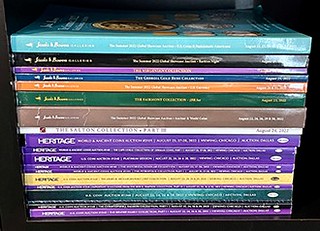 Each year about this time (leading up to the ANA World's Fair of Money), Heritage Auctions and Stack's Bowers Galleries send their catalogs for their summer auctions. This year's editions feature over 20 separate catalogs covering ancient and world coins, colonial coinage, early copper coins, regular issue US coins, paper money, tokens and medals. Several major specialty collections are being sold, with hundreds of six-figure-plus coins as well as a few multi-million-dollar coins offered. The combined sales this year will easily surpass $100 million.
Each year about this time (leading up to the ANA World's Fair of Money), Heritage Auctions and Stack's Bowers Galleries send their catalogs for their summer auctions. This year's editions feature over 20 separate catalogs covering ancient and world coins, colonial coinage, early copper coins, regular issue US coins, paper money, tokens and medals. Several major specialty collections are being sold, with hundreds of six-figure-plus coins as well as a few multi-million-dollar coins offered. The combined sales this year will easily surpass $100 million.
Like most of those who ponder the state of the rare coin market, the obvious question is: How can the market absorb so much material at once? The question is especially pointed this year as the stock market has slipped, cryptocurrencies have fallen sharply and the general public is being stressed by the rising costs of inflation.
Despite concerns by some observers, the rare coin market is much larger than many realize. The collector coins in the above plethora of sales will undoubtedly perform well, especially those needed for set registry competition. In a few weeks, the numismatic press will be singing the praises of the many auction records that were broken.
The major rarities that will sell for six and seven figures are finding homes with a new segment of the market — billionaire collectors.
One of the most interesting and impactful developments in numismatics in recent years has been the activity of a few incredibly affluent collectors. These collectors can spend more on one coin than your average collector spends in a lifetime. At least three or four of these mega-collectors have spent over $100 million on their rare coin collections in the last few years. We have all read the headlines about how rare coins at the high end of the market have been selling in record numbers and at record prices.
These so-called mega-collectors are not just buying million-dollars coins. They are actively building sets of the United States, world and ancient coins. They want the finest available and will spend to get them. These collectors have been very fortunate in the last several years as quite a few legacy collections have been offered at auction. These are collections individuals spent many decades building. Collections such as that of Eric Newman saw coins offered that had not been available since the 1940s. Many individual coins in amazing condition were sold for stunning prices as a result of competition among these super-rich collectors.

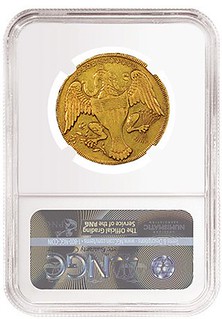
1792 Eagle & Stars Gold Washington President $10 graded NGC XF 45? and pedigreed to Eric P. Newman Collection.
Realized: $1.74 million in a 2018 Heritage Auctions sale
Everyone likes to know what so-called smart money
is doing in the way of investments. Stock market pundits listen and parse every statement from the Oracle of Omaha,
Warren Buffett, looking for clues to his investment strategy. There is little doubt that these individuals who have invested vast sums in the rare coin market are smart.
I have met a couple of these folks, and I can safely state that they are driven, super smart and think long-term. The question is: Why have they invested so heavily in the hobby of kings
— numismatics?
After speaking with one of these collectors, and others who know them, one common theme is a love of history. All seem to really appreciate the tangible links to history that numismatics provides. Whether it is a coin issued by Alexander the Great or a coin that had the personal involvement of George Washington, the historical aspect provides a strong magnet of interest. Rare coins are closely tied to many of the most important historical milestones of our country. Also, the financial history of our nation is closely reflected in these artifacts as well, which, for obvious reasons, is of interest to the extremely wealthy.
There is little doubt that these individuals think rare coins are an underpriced asset class. It would be hard to imagine anyone spending these huge sums on rare coins unless they thought it was a good investment. They may be buying the coins due to a love of history, but like all serious collectors, they hope their financial commitment to the hobby will prove to one day be a great investment.
There are ample reasons to think rare coins are underpriced at current levels. Truly great coins sell for millions of dollars, but truly great art sells for hundreds of millions. One super-rich collector stated that he could purchase a world-class coin collection, but a world-class art collection is beyond the reach of even the average billionaire. It's an interesting perspective that only the super-rich would ponder.
I believe that one of the biggest factors in the interest in rare coins of the super-rich has been the incredible increases in net worth among the wealthy. The stock market, real estate and business, in general, are at all-time highs in many cases. One wealthy collector stated to me that he was selling assets that he thought were overpriced and buying assets that he thought were underpriced — rare coins.
Finally, as incredible as it seems, these collectors also like competing with one another for having the best sets in the set registry programs. One collector's stated goal is to surpass Eliasberg as the No. 1 collection of all time. This is ambitious, to say the least, but there is little doubt about his commitment. When top pop,
finest-known examples of even mundane coins show up at auction, the prices realized can stun everyone. These serious collectors love the competition and recognition that set registry collecting provides.
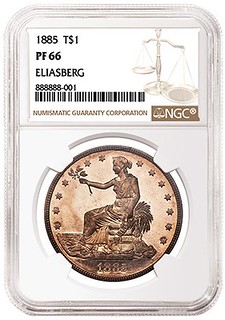

1885 Proof Trade Dollar graded NGC PF 66 and pedigreed to the Eliasberg Collection.
Realized: $3.96 million in a 2019 Heritage Auctions sale.
The average collector may think this has little to do with their collecting activity, but as stated above, it's always good to observe the activity of smart money.
The gigantic sums these collectors have infused into the hobby in recent years have impacted nearly every part of the rare coin market. Many wonder how the rare coin market would look if these folks had not fallen in love with coins. I hope their investments prove to be wise, and other wealthy individuals follow their lead.
Hear, hear! Jeff's comments ring true, and make perfect sense. This is the new normal. I recall a conversation decades ago with my friend and fellow numismatic bibliophile John Burns. We both felt high-end numismatic items deserved a place at the table alongside high-end art, and were flummoxed as to why the market couldn't see that. Well, the art world has moved from the tens of millions to the hundreds of millions, but numismatics has grown dramatically as well, with rare coins regularly reaching 7 and even 8 figures, finally gaining their place at the table. Numismatics has arrived. -Editor
To read the complete article, see:
Jeff Garrett: Sharp Competition in the Stratosphere of Numismatics
(https://www.ngccoin.com/news/article/10514/Weekly-Market-Report-August-2-2021/)
THE BOOK BAZARRE
VOCABULARY TERM: LIST MEDAL
Here's another entry from Dick Johnson's Encyclopedia of Coin and Medal Terminology. I added images of a Diplomatic Medal and an 1862 U.S. Mint medal price list from my numismatic ephemera collection. -Editor
 List Medal.
Medal offered for sale to the public by the United States Mint. Many of America's national medals made by the U.S. Mint are authorized by Congress to be sold to the public. Beginning in 1861 these medals were publicized by lists sent to inquirers or prospects, hence the name. More than a century later, in August 1969, on the occasion of the opening of the new Philadelphia Mint building, the list was published in book form. Entitled Medals of the United States Mint (see References below and Bibliography in the Appendix), the book illustrated the medals, biographies of those Americans portrayed and events honored (but lacked numismatic data or collector lore desired by those in the numismatic field). The book served as a check list of the medals then available for sale (although supplemental sales literature has been issued thereafter as well).
List Medal.
Medal offered for sale to the public by the United States Mint. Many of America's national medals made by the U.S. Mint are authorized by Congress to be sold to the public. Beginning in 1861 these medals were publicized by lists sent to inquirers or prospects, hence the name. More than a century later, in August 1969, on the occasion of the opening of the new Philadelphia Mint building, the list was published in book form. Entitled Medals of the United States Mint (see References below and Bibliography in the Appendix), the book illustrated the medals, biographies of those Americans portrayed and events honored (but lacked numismatic data or collector lore desired by those in the numismatic field). The book served as a check list of the medals then available for sale (although supplemental sales literature has been issued thereafter as well).
List medals are struck in bronze from dies prepared by the engraving staff at the U.S. Mint at Philadelphia. Several medal series are included, as U.S. Presidents, Secretaries of the Treasury, Mint Directors, Army and Navy medals, U.S. Mint buildings and such. Some collectors consider these medals restrikes – only those first issued near the time of their creation can be considered originals, they say. However, since these medals were issued by the U.S. Mint they are still considered official, despite their availability, some for nearly two hundred year's time. (In strict numismatic terminology, these medals are reissues, not restrikes.)
List medals range up to 3-inch size – some in the Indian Peace series are oval shaped – but beginning in 1971 a number of the medals were issued in 1 5/16-inch diameter. These mini medals are struck on coining presses in coin relief and are produced at two U.S. Mints, Denver and Philadelphia (they even bear mintmarks). The U.S. President series, U.S. Mint buildings and others are available in this miniature size also. The purpose of these smaller medals – at lower cost – were intended for children.
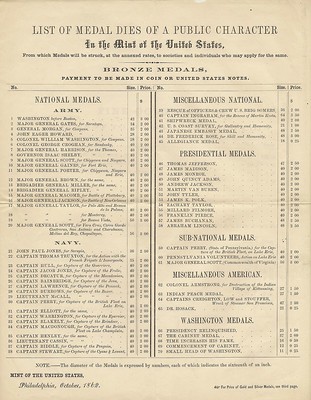 Patina finish of List medals. For the most part, medals struck in the 19th century by the U.S. Mint exhibit a different finish from those of the 20th century. This is true even for medals of the same design, struck at the same mint, often from the same dies. Nineteenth century medals bore a mahogany or chocolate patina finish; those made since 1910 are a yellow-bronze finish, and there was even an intermediate finish – not always the same, but often more chocolate brown in color. Collectors call these types I, II and III. See finish and finishing.
Patina finish of List medals. For the most part, medals struck in the 19th century by the U.S. Mint exhibit a different finish from those of the 20th century. This is true even for medals of the same design, struck at the same mint, often from the same dies. Nineteenth century medals bore a mahogany or chocolate patina finish; those made since 1910 are a yellow-bronze finish, and there was even an intermediate finish – not always the same, but often more chocolate brown in color. Collectors call these types I, II and III. See finish and finishing.
History of List medals. Historically the U.S. Mint sold medals of a national interest to the public just prior to the Civil War. As demand for such items as Washington and Lincoln medals grew, the mint supplied these. The subject of the medals issued in the first century of the mint's existence are covered in the book, Medals of the United States Mint, 1792–1892 by Robert W. Julian. Of the 573 medals listed as products of the Mint's first century, 123 became list medals.
Julian notes the earliest use of the term "list" medals and defines it as: "From this period on [1861], all national medals available for purchase by the public, and sold by the mint, were publicized by printed lists, hence the name." This appeared in the introduction (page 27) of his Medals of the United States Mint, 1792–1892.
Today no private medals can be struck at the U.S. Mint without authorization of Congress. But for much of our country's history private issues have been struck there for the reason that production facilities for striking large medals simply did not exist in America outside the U.S. Mint. A private medal industry, born of the Columbian Exposition of 1892, began to grow in size. By 1910 it had the facilities to produce a medal of most any size and by 1935 it began urging the federal government to get out of the private medal business. However, it was not until 1948 that the last private medal was struck at the Philadelphia Mint. (See private issue.)
While list medals include only those medals authorized to be sold to the public, the government does have a policy of making available bronze copies of gold medals presented to deserving Americans (and a few foreigners) authorized by Congress. Thus anyone can purchase these congressional medals in original 3-inch size struck in bronze. These include, for example, of the Jonas E. Salk Medal that the inventor of the Salk vaccine received in gold, or the entertainer Bob Hope. This egalitarian policy has existed for over a century and is in line with democratic principles of equality in America.
Beginning in 1984, however, the U.S. Mint began a program to reduce the number of list medals available for sale. In the first edition of the 1969 catalog 188 medals were available for public purchase. In the following 15 years this number had risen to over 210. Mint authorities felt, regretfully, it was impractical to continue to supply this many medals since some sold only a few each year.
Thus an austerity program, launched in 1984, led to the phasing out of less popular medals with no plans to replace or inventory these medals. In the end the unsold inventory of list medals were sold in grab bags! This marked, somewhat, a low point in the U.S. Mint's respect for the significance and heritage of these national medallic treasures.
Need for cataloging List Medals. Over the years some of the list medals were issued in several varieties, a different reverse design (as for a second term, say), signed and unsigned varieties, and such. These are all of vital interest to numismatists but for the most part this information remains uncataloged and unpublished.
References:
O23 {1969} United States Mint.
O37 {1977} Julian, Introduction, p 27.
To read the complete entry on the Newman Numismatic Portal, see:
List Medal
(https://nnp.wustl.edu/library/dictionarydetail/516241)
OTIS KAYE (1885-1974)
American Numismatic Biographies author Pete Smith submitted this article on artist Otis Kaye. Thanks! -Editor
A recent issue of The E-Sylum had a question about a painting by Otis Kaye. Compiling a biography was very difficult as typical biographical sources are not available.
Otis Kaye is known for including images of money in the composition of paintings. He painted
in the trompe l'oeil style, a term meaning fools the eye.
Such paintings were popular in the
nineteenth century but made illegal by a 1909 law that prohibited reproductions of currency. His
first known painting was Hidden Assets dated 1920.
He produced art for his own amusement and did not sell any in America. He lived frugally after 1930 and often used scraps of wood from old furniture as his painting surface. His works are so realistic it is difficult to tell from photos what is wood and what is a painting of wood.
The father of Otis was Werner Kaye (1850-1903). He probably Americanized his name when he immigrated from Germany to Illinois after 1880. With his wife, Freda Kozlik (1865-1915), he returned to Dresden where Otis was born in 1885. The family returned to America and Nahma, Michigan.
Werner had a lumber business and died in a mill accident in 1903. Freda took her son back to Dresden about 1904. Otis studied engineering and learned to be a draftsman and engraver.
Otis married Alma Goldstein (1886-1937) in 1910. She was well educated and came from a family of means. They had a daughter Freda and a son Oskar. Otis brought his family to America and Philadelphia following the end of World War I in 1918.
In Philadelphia, Kaye worked in engineering and invested his wife's money heavily in the stock market. Most of the value was lost in the stock market crash of 1929. His later paintings often reference his financial losses.
After losing his job, Kaye moved his family to Chicago to join his wife's older sister Anna Kozlik (1882-1939) and her son Paul Banks II (1908-1987). Their financial hardships led Alma to take her children and return to Germany about 1935. Alma and her daughter Freda died in an accident in 1937.
Kaye, Paul Banks II, and Charles Ashe formed a civil engineering company in Chicago, JJ
Byllesby & Co. They had government contracts during World War II. During this time Kaye
paintings featured banknotes with the signature of P. J. Sknab
which was a tribute to his
partner, Banks.
Kaye did not limit his output to money paintings. He was a skilled engraver who made copies of some of the great artists' works in their original size. Some might have been mistaken for the originals. He also did some nudes in watercolor, painted from life.
Kaye only sold two of his money paintings during his life. These were sold in Munich in 1937. Most of his paintings were stored in the garage of Paul Banks II. Many paintings had water damage and mildew damage while in storage.
 The painting, Heart of the Matter, which became the book illustration, was a wedding present to
Paul Banks III. His paintings often had themes taken from other famous paintings. This one was
based on Rembrandt's Aristotle Contemplating the Bust of Homer.
The painting, Heart of the Matter, which became the book illustration, was a wedding present to
Paul Banks III. His paintings often had themes taken from other famous paintings. This one was
based on Rembrandt's Aristotle Contemplating the Bust of Homer.
Kaye had a long-time desire to return to Dresden, then in East Germany, the German Democratic Republic. He left the United States about 1969. In 1975, word filtered back to Chicago that he had died in Germany the previous year. Responsibility to manage the estate and dispose of the paintings fell primarily on Paul Banks III.
A major exhibition of his works was mounted in 2015, Otis Kaye: Money Mystery and Mastery. This was shown at the New Britain Museum of American Art in Connecticut. A paperback catalog of the sale was produced. [Available on eBay for less than $5.]
His works frequently included verbal puns and visual puns. Viewers of the exhibition were challenged to find hidden clues and meanings. His collected works document his life better than published biographies.
Shown here are four of Kaye's paintings.
1. D'-JIA-VU (1937) Oil on Canvas 27 x 39.5 inches
The curve represents the value of the Dow Jones Industrial Average (DJIA) from 1929 to
1937. It is a comment on his losses in the crash of 1929. This was the subject of a book, Deja
vu All Over Again published in 2010.
2. U. S. Musical Notes (1946) Oil on Panel 30 x 24.75 inches
This is a visual pun with notes
representing both musical notes and currency. The fiddle
and notes take the shape of a dollar sign. On an attached pieces of paper is printed, Rev.
Otis Kaye said, ‘Stop fiddling around chasing money…'
3. Amor Vincit Onmia (1950) Oil on Panel 30 x 25 inches
This piece is a commentary of the loss of his wife. The blue envelope includes a photo of
Alma with a poem, Roses are red, violets are blue, lost your money, Lost me too.
The title
appears in the lower right corner and translates as Love Conquers All.
This is followed by
a candy cane and quarter forming a question mark.
4. Custer II / Going out of Business (1958) Oil on Panel 48 x 60 inches
In this version of Custer's Last Stand there is a simulated Going Out of Business notice
offering Blankets Beads et all / All Items Slashed / Cash Only
There is a small note in the
lower right corner from Chief Big Bucks and son, Small Change.
Otis Kaye is part of a long line of money artists stretching from William Harnett to J.S.G. Boggs to Mark Wagner and others working today. See the Loose Change article elsewhere in this issue for a new article on Boggs. -Editor
To read earlier E-Sylum articles, see:
STACK'S MINOT SALE FEATURES NUMISMATIC ART
(https://www.coinbooks.org/esylum_v11n18a13.html)
WAYNE'S NUMISMATIC DIARY: APRIL 29, 2018
(https://www.coinbooks.org/v21/esylum_v21n17a31.html)
NOTES FROM E-SYLUM READERS: JULY 24, 2022
(https://www.coinbooks.org/v25/esylum_v25n30a09.html)
LEGEND REGENCY AUCTION 54
Here's the press release for the Legend Regency Auction 54. Some beautiful coins here. -Editor
Legend Rare Coin Auctions, the Official Auctioneer of the PCGS Members Only Show, will present the 54th Regency Auction on September 8, 2022, at the Omni Hotel in San Diego. Containing 347 lots, the sale is anchored by the Meridian Collection of Proof Barber Dimes; the Perfection Collection of Capped Bust Half Dollars; and the Ed Wielawski Collection of Oregon Half Dollars. Also included in the sale are several fabled rarities.
The Perfection Collection. The astonishing Perfection Collection of Capped Bust Half Dollars. A collection decades in the making, starting in the 1980s, Mr. Perfection, as he is known in the hobby, caught the Bust Half Fever, and over the course of these nearly 40 years, has owned many great examples, from AU to MS67. The 33-coin PCGS Date Set Registry Set begins with 1807 and ends with 1839-O. The coins in this set, which ranks as the current #2 set on the PCGS Registry, and #3 all time, as well as being the #2 CAC Registry Set.
I have known Mr. Perfection for decades, and he has been an active and astute buyer from both
Legend Numismatics and Legend Rare Coin Auctions,
said Laura Sperber, founder of both Legend firms.
As his chosen online ‘handle' suggests, every coin had to be nothing less than perfection! We
congratulate him in the historic offering we will be presenting.
Each coin of the Perfection Collection is a highlight!
The Meridian Collection. This wonderful collection ranks near the top of the PCGS/CAC Registry Sets of the series.
The consignor has been an avid coin collector for over fifty years and a proficient numismatist who has assembled several extensive collections consigned to various auctions over the last twenty years, including several previous Legend Regency Auctions. He decided several years ago to put together smaller sets of Proof coinage of various unappreciated series of coins. It is our honor to now offer The Meridian Collection of Proof Barber Dimes. One of these sets was the Meridian Collection of Proof Liberty Nickels we sold in Regency Auction 34.
Every coin in this set is either a Gem or Superb Gem grade, most displaying Cameo or Deep Cameo contrast. The coins placed into these collections have been carefully selected for the strong eye appeal and high grades. While not all of the coins were the highest graded, many are among the finest certified, and each was specifically collected for its visual effect. The quality of the coins is acknowledged by the 100% CAC approval. A number of coins are from previous Legend Auctions or were from some fantastic collections, including Denali and Simpson.
The Ed Wielawski Collection. All the coins were hand selected by Ed, and many are either tied for finest or second finest for the issue; some of the coins are old friends, having been offered in earlier Regency Auctions. This popular classic commemorative type was struck for multiple, non-consecutive years, beginning in 1926 and ending in 1939. The complete series consists of 14 coins. Designed by James Earle and Laura Gardin Fraser, the obverse depicts a standing Native American in full headdress in the foreground, the map of the continental United States with a stylized covered wagon that follows the path of the famed Oregon Trail. The reverse shows a family traveling by covered wagon, the father leading the oxen on foot, while mother holds baby at the front of the wagon, as they follow the sun west. It is one of the most beautifully designed and adored type among the fifty that make up the classic commemorative type set.
Sale highlights include, but are not limited to:
Lot 1. 1/2C 1848 ORIGINAL PCGS PR65 BN CAC Ex Robinson-Partrick.
Lot 19. 1C 1935 PCGS MS68+ RD CAC
Lot 46. 5C 1935 PCGS MS68
Lot 60. 10C 1898 PCGS PR67+ DCAM CAC From The Meridian Collection Of Proof Barber Dimes
Lot 78. 10C 1915 PCGS PR67+ CAM CAC From The Meridian Collection Of Proof Barber Dimes
Lot 79. 10C 1874-CC ARROWS PCGS AU55 CAC Ex Rian's Bequest
Lot 93. 25C 1823/2 PCGS AU55
Lot 104. 25C 1897-S PCGS MS67+ CAC Ex R.S.D. Collection
Lot 111. 25C 1892 PCGS PR68+ CAM CAC
Lot 130. 50C 1815/2 PCGS MS64+ CAC From The Perfection Collection Of Capped Bust Half Dollars Ex Eliasberg
Lot 135. 50C 1821 PCGS MS66 CAC From The Perfection Collection Of Capped Bust Half Dollars
Lot 140. 50C 1826 PCGS MS67 CAC From The Perfection Collection Of Capped Bust Half Dollars Ex Eliasberg
Lot 155. 50C 1839-O PCGS MS65+ CAC From The Perfection Collection Of Capped Bust Half Dollars
Lot 196. $1 1880-S PCGS MS68+ PL CAC
Lot 246. $1 1925 PCGS MS67+ CAC
Lot 256. $1 1934-S PCGS MS66 CAC
Lot 262. G$1 1877 PCGS MS68 CAC
Lot 265. $2.50 1864 PCGS AU50
Lot 279. $5 1846-O PCGS AU55 CAC
Lot 308. $20 1904 PCGS MS64+ PL CAC
Lot 322. 50C 1928 OREGON PCGS MS68 From The Ed Wielawski Oregon Collection
Lot 327. 50C 1937-D OREGON PCGS MS68+ CAC From The Ed Wielawski Oregon Collection
Lot 346. 50C 1870 J-989 PCGS PR67+ RB CAC
Lot 347. $1 1871 J-1148 PCGS PR66+ RB CAC
A 143-lot internet only session, as part of Regency Auction 54, will soft-close on Sunday, September 11, 2022 beginning at 7pm eastern.
For more information, or to bid, see:
https://www.legendauctions.com/
DAVISSON'S E-AUCTION 44 SELECTIONS
Here's a selection of items that caught my eye in the upcoming Davisson's sale. -Editor
JUDAEA. Bar Kokhba Revolt. 132-135 C.E. AR zuz, overstruck on a denarius of Galba. 3.58 gm. 19 mm. Dated year 2 (133/4 C.E.). Grape bunch on vine / Palm frond. Hendin (5th ed.) 1394 corr. (rev. type). Mildenberg 40.5 (O7/R12'; this coin). Meshorer 248. Undertype: RIC I 232. RSC 240. Extremely Fine; beautiful lustrous lightly iridescent tone; crisply struck, with design and undertype both clearly visible: outline of bust on obverse oriented towards 6' (180 degree rotation), portions of legend including clear name of Galba visible outside dotted circle on both sides. Scattered deposits visible in 2004 Heritage photo have since been carefully removed, the only minimal traces in hand being slight variation in toning. Rare. Exceptional coin.
Beautiful piece. -Editor
To read the complete lot description, see:
E-Auction 44 Lot 51
(https://davcoin.com/lot/e-auction-44-lot-51)
ANGLO-SAXON. Kings of Mercia. Burgred. 852-874. AR penny. 1.28 gm. 20.5 mm. Eanred, moneyer. Circa 855-858/60. Bust right, large annulet with pellet eye; +BVRGRED REX around (MacKay V50) / MON above within a closed lunette, ETA below within an inverted lunette, +EANRED across the center. S. 942 E. N. 423. MacKay variety P2. Extremely Fine; as made, well centered and well struck.
To read the complete lot description, see:
E-Auction 44 Lot 103
(https://davcoin.com/lot/e-auction-44-lot-103)
Buckinghamshire 7c. Aylesbury (Scarce). (ANTI-SLAVERY ISSUE). Copper halfpenny. 9.63 gm. 29.5 mm. By James. 1796. Laureate bust of William III right; TO THE FRIENDS FOR THE ABOLITION OF SLAVERY / A radiant cap of Liberty on a pole, four flags; AYLESBURY TOKEN above, 1796 below. Plain edge. Brown Uncirculated; luster traces; minor flan irregularities and rust on the die, elements present before the strike; a notably strong strike for this issue.
Nice abolitionist piece. -Editor
To read the complete lot description, see:
E-Auction 44 Lot 176
(https://davcoin.com/lot/e-auction-44-lot-176)
Middlesex 2Bis (discovery piece, extremely rare). Christ's Hospital. (1800). Copper six pence. 12.19 gm. 28 mm. Octagonal. C H monogram with solid strokes and lacking a date / SIX PENCE. As made; toned with substantial red evident. A discovery from the "Baldwin Basement" holdings; unpublished before the Davisson 1990 update edition of D&H (illustrated there).
A plain but interesting rarity. -Editor
To read the complete lot description, see:
E-Auction 44 Lot 183
(https://davcoin.com/lot/e-auction-44-lot-183)
CHINA. Kaiu Chau under Wilhelm I of Germany. (The German colony of Kiachow). Five cents (nickel). 2.93 gm. 18.5 mm. German eagle, outspread wings; DEUTSCH KIAUTSCHOU GEBIET 1909 around / "German Coin" in Chinese within a beaded circle; "Tsingtao" and "5 Cents" in Chinese. Kann 873. Good Extremely Fine; lustrous. According to Kann, Germany issued these two coin denominations for their use in the colony because of "the vicissitudes of Chinese 'small coin.'"
Cool German colonial item. -Editor
To read the complete lot description, see:
E-Auction 44 Lot 238
(https://davcoin.com/lot/e-auction-44-lot-238)
GREAT BRITAIN. Death of Princess Augusta. Æ. 14.51 gm. 33 mm. By T. Lang. 1772. Draped bust of Princess right / Phoenix arising from flames. BHM 159. Good Extremely Fine.
Great color - nice medal. -Editor
To read the complete lot description, see:
E-Auction 44 Lot 290
(https://davcoin.com/lot/e-auction-44-lot-290)
To read the earlier E-Sylum articles, see:
DAVISSON'S E-AUCTION 44
(https://www.coinbooks.org/v25/esylum_v25n31a18.html)
A BRONZE FOLLIS OF ANASTASIUS
(https://www.coinbooks.org/v25/esylum_v25n33a24.html)
EROTICISM ON ANCIENT COINS
How could we not publish a teaser excerpt of Mike Markowitz's recent Coin Week article about eroticism on ancient coins? See the complete article online for more. -Editor
In Greek mythology, satyrs were lustful woodland spirits, companions of Dionysus the wine god (so they were often portrayed both drunk and aroused). For over a century (c. 525 – 411 BCE) the Aegean island of Thasos, famed for wine, issued coins depicting a satyr behaving inappropriately with a protesting nymph.
A learned auction cataloger writes:
"The overtly sexual displays seen on many early Greek coins can be disconcerting to the modern eye, viewing them through the lens of centuries of Christian fulminations against ‘paganism' and its erotic excesses. These scenes are at their most graphic in northern Greece, for example, on the archaic coins of …Thasos, showing the interplay of nymphs and satyrs. The towns and tribes of this region were only newly introduced to the ‘civilizing' influences of the south, and were still close to their roots in farming and herding cultures. Their gods were not the Olympian super beings, but the spirits of nature, and the emphasis was on celebrating the fecundity of fields and flocks."
From Eros to Cupid
The Romans represented Eros as a chubby winged baby, sometimes with a bow and quiver of arrows, the figure we recognize as Cupid. He appears on a variety of Republican denarii, for example an issue of Manius Fonteius, riding on a shaggy goat (perhaps a symbol of lust). The obverse of an issue of Caius Egnatius (75 BCE) shows a classic Cupid with a bow and quiver of arrows. Exceptional examples of this coin go for thousands of dollars, perhaps as upscale Valentine's Day gifts for fortunate numismatists.
To read the complete article, see:
Eroticism on Ancient Coins (Adults Only)
(https://coinweek.com/ancient-coins/eroticism-ancient-coins-adults/)
DOUBLE-STRUCK MINT ERRORS
Earlier this month error dealer Jon Sullivan published a nice article on the PCGS site about double-struck error coins. Here's an excerpt - see the complete article online. -Editor
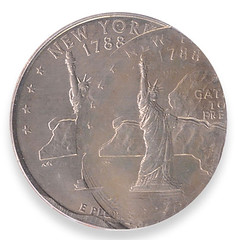 A very popular mint error type is the double-strike. It is dramatic in appearance and easily understood. Some of the most valuable mint errors are double-struck coins. Double-strikes are found on the earliest ancient coins all the way up to the modern-day coinage. Because of how coins are made, being
A very popular mint error type is the double-strike. It is dramatic in appearance and easily understood. Some of the most valuable mint errors are double-struck coins. Double-strikes are found on the earliest ancient coins all the way up to the modern-day coinage. Because of how coins are made, being struck
with dies, it's an error type which will likely always be with us (and that's a good thing!)
As the name would suggest, a double-strike is a coin that is struck twice.
The double-struck coin typically will be struck correctly on the first strike, but then will be struck again either on-center or off-center. A double-struck coin is one that has just been struck twice, but the number of times a coin can be struck is infinite, and some coins are known with over 100 strikes on them.
Let's talk about the four primary double-struck types: the double-struck off-center, the double-struck on-center, the multi-struck, and the flip-over double-struck.
The double-struck off-center occurs when a coin is struck and then fails to be fully ejected from between the dies before being struck a second time with the strike off-center. Above, we see an example of a double-strike with the second strike off-center. This is the most common of the double-strike types.
Double-strikes on-center generally occur when a coin is struck, fails to be ejected from the collar die, and is struck again with the second strike directly on top of the first strike. Oftentimes, double-strikes on-center will be rotated between strikes, with the first strike not perfectly aligned with the second strike.
A multi-strike is a coin with three or more strikes. Multi-strikes can be either on-center or they can be off-center, but in order to qualify as a multi-strike, the coin must have at least three strikes present. It is not uncommon for a coin to be struck four or five or more times, although generally the more strikes a coin has the scarcer it will be.
Why do double-strikes occur at all? Usually, it's because there is something not working correctly with the coin press' ejection system, and the feeder finger (which is what puts planchets between the dies and ejects them from the die) is not working correctly; it fails to eject the struck coin from between the dies. When this happens, the dies strike the coin a second, third, or more times until either the coin is ejected or a mint employee notices the press is not functioning properly, stops the press, and fixes whatever the issue is.
To read the complete article, see:
Double-Struck Mint Errors
(https://www.pcgs.com/news/doublestruck-mint-errors)
KAVANAGH'S INDIAN MUTINY VICTORIA CROSS
This Noonan's press release describes an important Victoria Cross medal offered by the firm in their upcoming September sale. -Editor
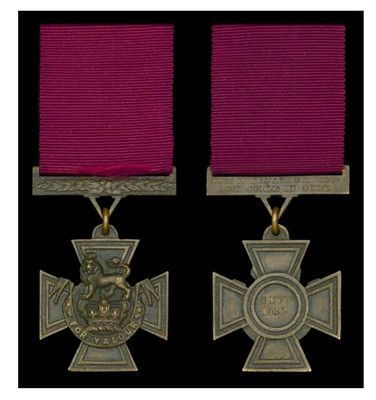 The famous Indian Mutiny ‘Siege of Lucknow' Victoria Cross awarded to Irishman Thomas Henry Kavanagh will be sold by Mayfair-based Auctioneers Noonans on Wednesday, September 14, 2022 in a sale of Orders, Decorations, Medals and Militaria. This was the first civilian V.C. of five to be awarded and is one of only two that is not currently in a museum, it is estimated at £300,000-400,000.
The famous Indian Mutiny ‘Siege of Lucknow' Victoria Cross awarded to Irishman Thomas Henry Kavanagh will be sold by Mayfair-based Auctioneers Noonans on Wednesday, September 14, 2022 in a sale of Orders, Decorations, Medals and Militaria. This was the first civilian V.C. of five to be awarded and is one of only two that is not currently in a museum, it is estimated at £300,000-400,000.
Kavanagh, who was born on July 15, 1821 in Mullingar, Co. Westmeath, Ireland, was employed as a clerk in the Lucknow Office prior to the Siege. In November 1857, he volunteered to leave the safety of the Residency disguised as a Sepoy (an Indian soldier serving under British or other European orders), accompanied by a Brahmin scout. The pair jostled past armed rebels through the narrow Lucknow streets and talked their way past sentries in the moonlight, crossed deep rivers, tramped through swamps and narrowly avoided capture after startling a farmer who raised the alarm. On finally reaching a British cavalry outpost, Kavanagh delivered Outram's vital despatch to Sir Colin Campbell and ably guided his column to the relief of the Residency garrison.
Oliver Pepys, Auctioneer and Medal Specialist (Associate Director) Noonans explains: Kavanagh was decorated with the highest honour for undertaking an epic quest to escape the surrounded Residency at night, crossing enemy lines, making contact with the camp of the Commander-in-Chief, and then using his local knowledge to guide the relieving force through the city to the beleaguered garrison by the safest route.
He continued: The first of just five civilians to have been awarded the V.C., he was further rewarded with promotion to the gazetted post of Assistant Commissioner of Oude and was presented with his Victoria Cross by Queen Victoria in a special ceremony at Windsor Castle. A tour of England and Ireland further enhanced his celebrity while the publication of his account of the Siege, ‘How I won the Victoria Cross' and Orlando Norrie's painting of him donning his Indian disguise - one of the truly iconic images of the Defence of Lucknow – ensured that he became a Victorian legend, indeed few histories of the conflict are without an image of ‘Lucknow Kavanagh'.
For paintings of Kavanagh in the National Army Museum, see:
Thomas Henry Kavanagh VC (1821-82) c.1860 (oil on canvas)
(https://www.bridgemanimages.com/en/desanges/thomas-henry-kavanagh-vc-1821-82-c-1860-oil-on-canvas/oil-on-canvas/asset/237651)
Thomas Henry Kavanagh VC - being disguised as a native during the Indian mutiny at...
(https://www.bridgemanimages.com/en/desanges/thomas-henry-kavanagh-vc-1821-82-being-disguised-as-a-native-during-the-indian-mutiny-at-the-siege/oil-on-canvas/asset/244200)
For more information, see:
https://www.noonans.co.uk/
FRANCO-PRUSSIAN WAR MEDALS
The Military Trader site recently published a new article on Franco-Prussian War Medals. Here's an excerpt. -Editor
Before 1871, the country of Germany was made up of a collection of independent states, including Bavaria, Saxony and Hanover. In total, there were 43 such states, styled as Duchies, Electorates, Principalities and even Kingdoms, each with its own army, the most powerful of which — and the most militaristic — being Prussia.
Indeed, so powerful was the Prussian state that on its own in 1866 it fought and won a decisive war against the entire country of Austria, which it defeated in only seven weeks. Four years later, Prussia was at war again. This time it against France, considered at the time to be one of the most powerful armies in Europe. France, under Emperor Napoleon III, had become concerned with the growing strength of Prussia and mobilized the army on July 15, 1870. Three days later France declared war against Prussia, and on Aug. 2 crossed the border.
Prussia, under Kaiser Wilhelm I, responded to France's actions and mobilized its army. To many military minds, victory looked like a forgone conclusion for France, since it was almost twice the size of Prussia and had more manpower for its military. However, almost from the start, things went badly wrong for France on the battlefield. Over the next six months the French army stumbled through one defeat after another. Napoleon III was taken prisoner on Sept. 2, after the Battle of Sedan, but the war dragged on for another four months before culminating with the capital city of Paris being surrounded and besieged.
Humiliated, France surrendered on Jan. 28, 1871 bringing the war to an end.
Only four months after the end of the war, on May 20, 1871, Prussian Kaiser Wilhelm I instituted a medal for the soldiers who had delivered another victory to a grateful state. Known as the Kriegsdenkmunze fur die Feldzuge 1870-71 (War Commemorative Medal 1870-71) it was cast in bronze, which came from a French cannon captured in battle. This fact was substantiated by the motto appearing in upper case lettering, reading: ‘AUS EROBERTEM GESCHUETZ' (FROM CONQUERED CANNON)
The medal is a circular disc measuring 33mm in diameter, making it much smaller than many campaign medals. On the upper edge is a simple attachment ring through which passes the ribbon ring. The ribbon itself is the national colors of a united Germany, with central vertical red stripe bordered on either side by a stripe in black, followed by white stripes and ending at the edge either side with black stripes.
In the center of the obverse there is the Royal cypher, a Gothic-style ‘W' for Wilhelm I. It is surmounted by a crown and below is the inscription ‘Dem siegreichen herre' (To the Victorious Army). This is framed by a circle which is set in slightly from the edge to form a margin around the circumference of the medal. Within this margin appears the inscription ‘Gott war mit uns, ihr sei dei ehre' (God was with us, to Him be the glory'. On the non-combatant version of the medal in steel, the center inscription reads ‘Fur pflichttreue in krieg' (For devotion to duty in the war). The design on the reverse consists of a cross pattée, also known as a tatzenkreuz, overlaying a sunburst, the rays of which radiate out equally from between the junctions of the four arms of the cross. In the centre of the cross the date 1870 appears over 1871 and is surrounded by a garland of laurels. No wording appears on this side.
To read the complete article, see:
A look at the medal that commemorated the Franco-Prussian War of 1870-71
(https://www.militarytrader.com/militaria-collectibles/pursuit-of-the-prussian-prize)
THE BOOK BAZARRE
R.S. Yeoman and His Remarkable Red Book,also tells the history of Whitman Publishing as well as his own unique life story in and out of numismatics. Enjoy more than 100 years of fascinating numismatic history in 352 richly illustrated pages, 8.5 x 11 inches, hardcover. Order your copy online at Whitman.com , or call 1-800-546-2995.
FERRIS WHEEL MEDALS
An article by Jay Turner published on the PCGS website illustrates some so-called dollars picturing the Ferris Wheel from the 1893 World's Columbian Exposition in Chicago. Designed by Pittsburgh bridge-builder George W. Ferris, the rides remain a staple of amusement parks worldwide. The 1893 World's Fair wheel and an earlier prototype built in Pittsburgh were demolished long ago. I've added an image of the early model from the Historic Pittsburgh website.
Here's an excerpt from Jay's article - see the complete article online. -Editor
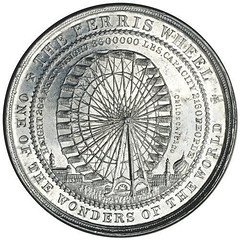 It had been four years since the Exposition Universelle in Paris, France, where the world had been introduced to the centerpiece of the fair – a tower built by Gustave Eiffel. This tower, the tallest structure on the globe at the time, had instantaneously become a world wonder. The 1893 World's Fair in Chicago was America's chance to shine, but how could they compete with the exquisite exhibits on the ground, let alone the grand Eiffel Tower from Paris?
It had been four years since the Exposition Universelle in Paris, France, where the world had been introduced to the centerpiece of the fair – a tower built by Gustave Eiffel. This tower, the tallest structure on the globe at the time, had instantaneously become a world wonder. The 1893 World's Fair in Chicago was America's chance to shine, but how could they compete with the exquisite exhibits on the ground, let alone the grand Eiffel Tower from Paris?
The United States needed its own Eiffel Tower, something that would stun, amaze, and would be talked about for years. The proposals ran from the ridiculous to the impossible. One such proposal was a tower made from stacked logs that would measure 2,000 feet with a replica of Abraham Lincoln's boyhood home at the top. Another absurd proposal called for a structure to be built so tall that visitors would ride an elevator to the top in Chicago and take a slide down allowing them to arrive in San Francisco or New York. An American civil engineer, George Washington Gale Ferris, Jr., stepped forward with plans that would out-Eiffel Eiffel
and fit the planners' criteria for something original, daring, and unique.
Ferris had come to Chicago in 1891 with the news of the World's Columbian Exposition to be held there in 1893. His proposed design for the exposition was a wheel that would rotate, allowing visitors to view the entire exhibition. The idea of a rotating wheel ride wasn't unique. Concepts had existed since the 1600s, a rotating wheel was created for the 1854 New York State Fair, and in 1892 three 50-foot wooden wheels were installed in amusement parks in New York and New Jersey. Yet Ferris' design called for a wheel of a size and design that was so unique that when proposed it was deemed unsafe. When Ferris returned a few weeks later with respectable endorsements from established engineers and local investors who were willing to cover the $400,000 construction costs, the plans were approved.
When construction was done on Ferris's wheel, the structure had a height of 264 feet, the tallest attraction at the World's Columbian Exposition. While it was shorter than Eiffel's tower (1,063 feet), his structure didn't move. The wheel had 36 passenger cars, each car had 40 revolving chairs and could hold 60 individuals, giving the attraction a total capacity of 2,160 people at any given time. On June 9, 1893, the wheel was given its first test run and when it started bolts and debris fell from the sky, but it worked.
The World's Columbian Exposition offered countless souvenirs and collectibles for visitors. The Ferris wheel was a popular highlight of the World's Fair and, after having the experience of seeing and riding the attraction, it was something people wanted a keepsake of. Several medals were made featuring the Ferris wheel at the Columbian Exposition, including four medals that would be later cataloged as So-Called Dollars. HK-170 features the Ferris wheel on the reverse with the inscription GREATEST MECHANICAL ACHIEVEMENT OF THE AGE
and HEIGHT 264 FEET WEIGHT 4300 TONS CAPACITY 2160 PERSONS ENGINES 2000 HORSE POWER.
This design is combined with an obverse featuring the Administration building.
To read the complete articles, see:
The Ferris Wheel
(https://www.pcgs.com/news/the-ferris-wheel)
Ferris Wheel
ca. 1893-1906
(https://historicpittsburgh.org/islandora/object/pitt:200413.063.WF)
1777 SCOTLAND TRI-COLOURED BANKNOTE
I didn't manage to get this into our last issue, and missed the sale date. But this Noonan's press release discusses an interesting historical banknote. -Editor
 A Royal Bank of Scotland note dating from 1777, which is thought to be first tri-coloured note to be issued in Scotland and possibly in Europe will be sold by Mayfair-based Auctioneers Noonans on Wednesday & Thursday, August 24 & 25, 2022 in a sale of Banknotes. Known as the Red Guinea, it is estimated at £1,500-2,000.
A Royal Bank of Scotland note dating from 1777, which is thought to be first tri-coloured note to be issued in Scotland and possibly in Europe will be sold by Mayfair-based Auctioneers Noonans on Wednesday & Thursday, August 24 & 25, 2022 in a sale of Banknotes. Known as the Red Guinea, it is estimated at £1,500-2,000.
This is as much an historical document as it is a banknote,
says Noonans' Head of Banknotes Andrew Pattison. Politics and finance originally came together to shape the history of Scotland with the collapse of the Darien venture. The Royal Bank of Scotland was able to prosper as a shareholding company because the Scottish regional banking system was not restricted by the monopoly of the Bank of England, as institutions were south of the Border.
The modern banking system has its origins in the days when this note was issued, and it is a fascinating reminder of those times.
Scotland's attempt to monopolise the Atlantic to Pacific trade route across Panama ended in the Darien disaster of the 1690s. It cost the Scots around 20% of their circulating wealth and was a major factor leading to the 1707 Act of Union with England, which agreed to bail out the losses.
The company formed to manage the payments realised it had money over to invest and petitioned the king for approval to start a bank. In 1727 a royal charter duly allowed the establishment of the Royal Bank of Scotland.
The existing Bank of Scotland's trading monopoly had already lapsed, creating the opportunity for the new Royal Bank to expand. However, instability, especially because of the 1745 Jacobite uprising, made this difficult. Eventually, as Edinburgh became the centre of the Enlightenment, the bank prospered, opening its first branch office, in Glasgow, in 1783, to help fund investment in the city's burgeoning port and factories.
Six years before this initial expansion took place, the bank issued a One Guinea note, signed by two directors of the Royal Bank of Scotland. Charles Moore and James Simpson. Dated 1st September 1777 and carrying the serial number 857/297, it promised to pay Archibald Hope the sum listed on production of the note.
Hope was probably Sir Archibald Hope 9th Baronet (1735-94) who established the family seat at Pinkie House in Musselburgh, Edinburgh in 1778.
For more information, see:
https://www.noonans.co.uk/
EXHIBIT: DEFACED! MONEY, CONFLICT, PROTEST
Money art is featured in an upcoming exhibit at the Fitzwilliam Museum in Cambridge. Found via News & Notes from the Society of Paper Money Collectors (Volume VIII, Number 9, August 16, 2022) -Editor -Editor
The £10 banknote is a work by Boo Whorlow called Harry of England/Ten Megs, a reworking of Banksy's Di-Faced Tenner which featured Diana, Princess of Wales.
Artworks in which Harry and Meghan take the Queen's place on "defaced" £10 notes are to go on display in Cambridge.
The exhibition, entitled Defaced! Money, Conflict, Protest, will be on show at the Fitzwilliam Museum from October until January next year.
The Duke and Duchess of Sussex appear in a 2019 work by Boo Whorlow called Harry of England/Ten Megs, a reworking of Banksy's Di-Faced Tenner which featured Diana, Princess of Wales.
In the work, Harry replaces the Queen while Meghan appears on the reverse with the message Trust No Press
.
The museum said: "The exhibition presents a world history of protest from the last 250 years through currencies that have been mutilated as cries of anger, injustice, mockery or despair."
It is the first major exhibition to display money used as a public canvas for political and social rebellion throughout 250 years of history.
For the first time, it will showcase a new collection of defaced banknotes and coins which has been acquired for the museum by curator Dr Richard Kelleher.
A image from the Fitzwilliam Museum exhibition with a defaced £10 note featuring the Duchess of Sussex.
To read the complete article, see:
Duke and Duchess of Sussex Harry and Meghan replace Queen on banknotes in new Cambridge exhibition
(https://www.itv.com/news/anglia/2022-08-15/harry-and-meghan-replace-the-queen-on-banknotes-in-new-exhibition)
LOOSE CHANGE: AUGUST 28, 2022
Here are some additional items in the media this week that may be of interest. -Editor
Elsewhere in this issue Pete Smith's biography article discusses Otis Kaye's money-based art. Last month a new article was published online about money artist J.S.G. Boggs. See the complete well-illustrated article online. Also found via News & Notes from the Society of Paper Money Collectors (Volume VIII, Number 9, August 16, 2022) -Editor
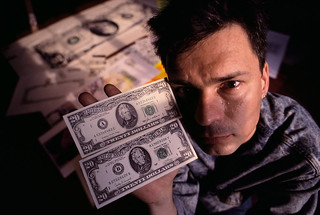 There was an argument to define if Boggs processes and creations were, in fact, art. As much as art dealers and collectors recognised him as an authentic artist, the Secret Service and other government bodies went after him as a fraud, a deceiver.
There was an argument to define if Boggs processes and creations were, in fact, art. As much as art dealers and collectors recognised him as an authentic artist, the Secret Service and other government bodies went after him as a fraud, a deceiver.
"They said I was a counterfeiter. They don't understand the difference between art and crime."
Boggs made art to critique money as a social construct, money being an idea created and accepted by people in societies, battling against money's established notion of value.
To read the complete article, see:
The Boggs Performance: A Money Art Interaction
(https://banknoteartconcept.com/the-boggs-performance-a-money-art-interaction/)
To read an earlier E-Sylum article, see:
J.S.G. BOGGS (1955-2017)
(https://www.coinbooks.org/v20/esylum_v20n05a04.html)
A West Virginia Congressman is criticizing the U.S. Mint over handling of the Silver Eagle bullion program. I haven't been following this and don't know the backstory - what's really going on here? -Editor
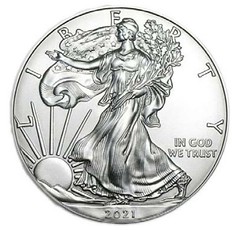 Rep. Alex Mooney (R-WV) is calling out U.S. Treasury Secretary Janet Yellen and U.S. Mint Director Ventris Gibson for the "long-running production slowdown" in the Silver American Eagle bullion coin program that has caused "shortages and dramatically higher market prices for this iconic silver coin as compared to its peers worldwide."
Rep. Alex Mooney (R-WV) is calling out U.S. Treasury Secretary Janet Yellen and U.S. Mint Director Ventris Gibson for the "long-running production slowdown" in the Silver American Eagle bullion coin program that has caused "shortages and dramatically higher market prices for this iconic silver coin as compared to its peers worldwide."
In a letter dated August 25, Mooney cited 31 U.S. Code § 5112(e) which states, "the [Treasury] Secretary shall mint and issue, in qualities and quantities that the Secretary determines are sufficient to meet public demand coins which- (1) are 40.6 millimeters in diameter and weight 31.103 grams; (2) contain .999 fine silver; (3) have a design- (A) symbolic of Liberty on the obverse side; and (B) of an eagle on the reverse side."
But, as Mooney pointed out, the U.S. Mint has only made 11.6 million ounces of the silver bullion coin available to the public through July 2022 - barely half of what has been supplied through the first seven months of prior years when demand has been similarly strong.
"This shortage in U.S. Mint production has apparently led to extremely high market-based premiums on Silver Eagles (as high as 70% over the silver melt value)
To read the complete article, see:
Congressman Criticizes U.S. Mint's Management of Silver American Eagle Program, Demands Answers
(https://www.yahoo.com/entertainment/congressman-criticizes-u-mint-management-000000118.html)
It's not numismatic in any way, shape or form, but bibliophiles, ephemera collectors and music history fans should enjoy this Los Angeles Times article on rare book dealers and the infamous stolen ‘Hotel California' lyric sheet. -Editor
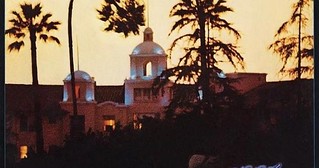
I'm like, is that the Glenn Horowitz?
said Travis McDade, a professor at the University of Illinois College of Law specializing in rare manuscript theft, describing his first impression of the case. Because he's a big deal, especially when it comes to archive stuff. He sells high-profile archives to big institutions. He's at the top of the game when it comes to that sort of thing.
Horowitz, 66, has been a big shot in the rare book world for many decades, but really separated himself through his work arranging and placing, at various institutions for vast amounts of money, the literary archives of household names: Kurt Vonnegut, Joseph Heller, Gabriel García Márquez. His brokerage of Vladimir Nabokov's estate in 1992 is said to have been the first of its kind to surpass $1 million, and, in 2016, he placed Bob Dylan's archive for approximately $20 million. More recently, Horowitz was the dealer behind Eve Babitz's archives landing at the Huntington Library, Art Museum and Botanical Gardens in San Marino.
To read the complete article, see:
Welcome to the ‘Hotel California' saga: Missing lyric sheets, rare book dealers and a relentless Don Henley
(https://www.latimes.com/entertainment-arts/music/story/2022-08-25/hotel-california-eagles-lyrics-alleged-stolen-don-henley)
See also:
DECEMBER 1976: EAGLES RELEASE "HOTEL CALIFORNIA" THE ALBUM
(https://weareclassicrockers.com/article/december-1976-eagles-release-hotel-california-album)
FEATURED WEBSITE: JOURNAL OF EAST ASIAN NUMISMATICS
This week's Featured Web Site is The Journal of East Asian Numismatics (JEAN).
In 1994, The Journal of East Asian Numismatics (JEAN) was founded by Michael Chou, the CEO of Champion Auction and Bruce Smith, a noted numismatist. It is a professional numismatic academic journal whose mission is to educate collectors and researchers on the subjects of Chinese numismatics, culture and history.
It will be a quarterly, bilingual e-journal, covering the latest numismatic research, interviews with famous collectors, auction reviews, and general news. The Journal's distribution is now over 1,000, including over 3,000 in Greater China region.

